Lecture Notes on Commercial Practices and Religious Tolerance
1/54
Earn XP
Description and Tags
Flashcards based on lecture notes to help review for an exam.
Name | Mastery | Learn | Test | Matching | Spaced |
|---|
No study sessions yet.
55 Terms
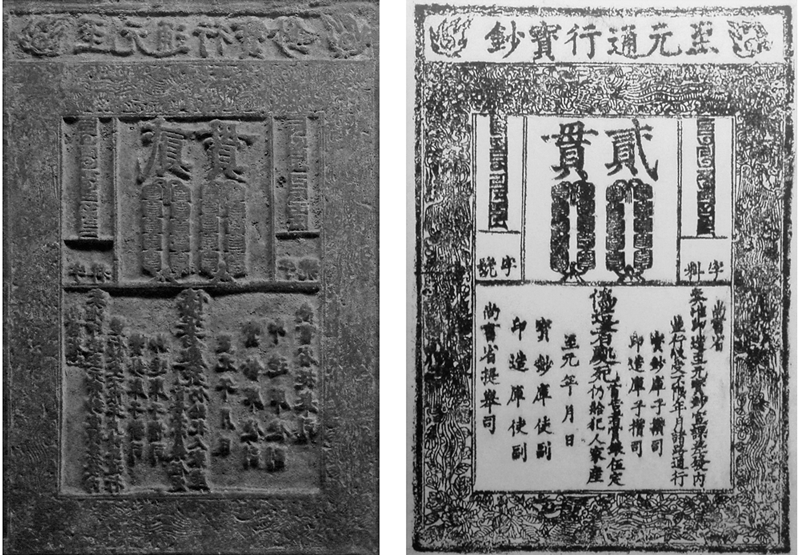
What was the purpose of the commercial practices shown in the images?
To facilitate the development of regional trade networks by creating uniform currencies and systems of credit.
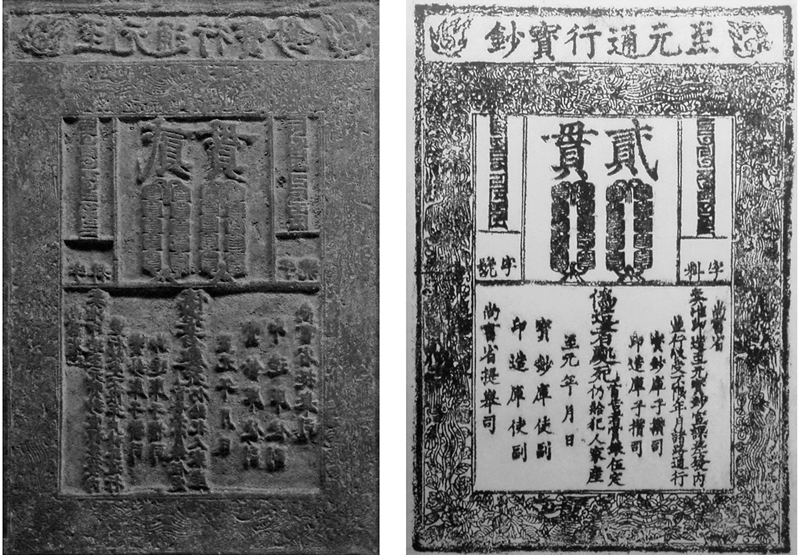
Image 1 could best be used as evidence of the ways in which…?
The introduction of new commercial practices fostered urban expansion.
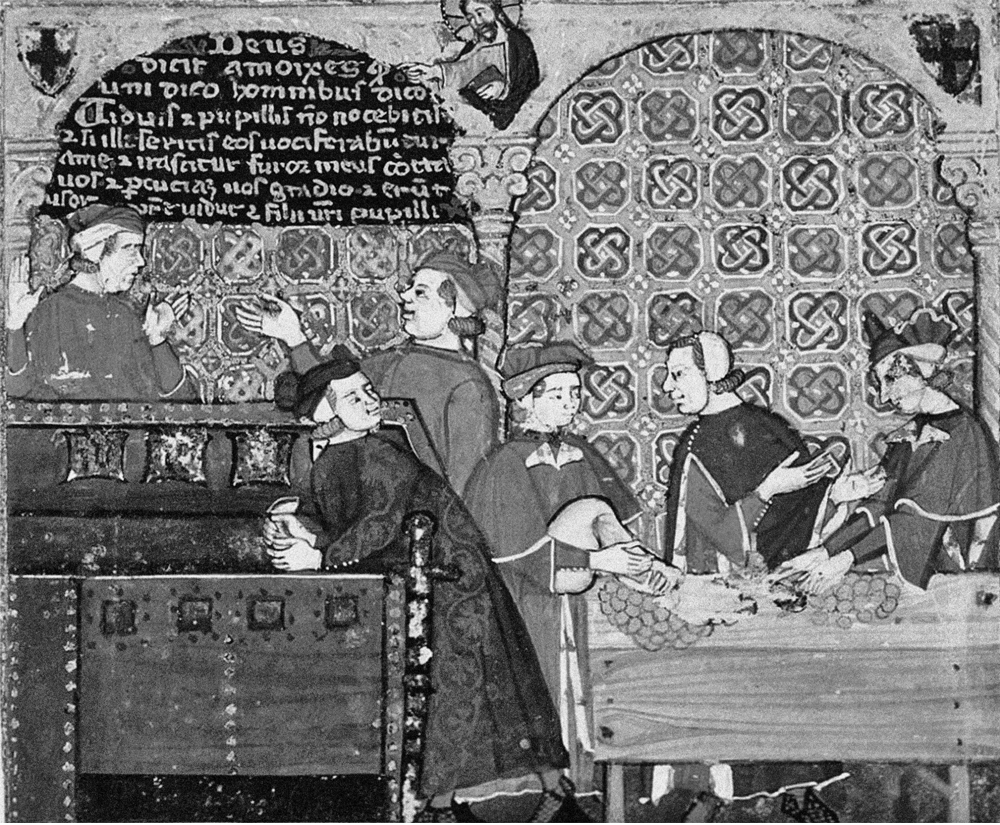
The author's portrayal of the activities shown in Image 2 was most directly informed by…?
Christian religious ideals.

Which best explains why the currency often led to hyperinflation under the Yuan dynasty?
Excessive amounts of currency were printed in order to fund military expeditions and reward local elites.
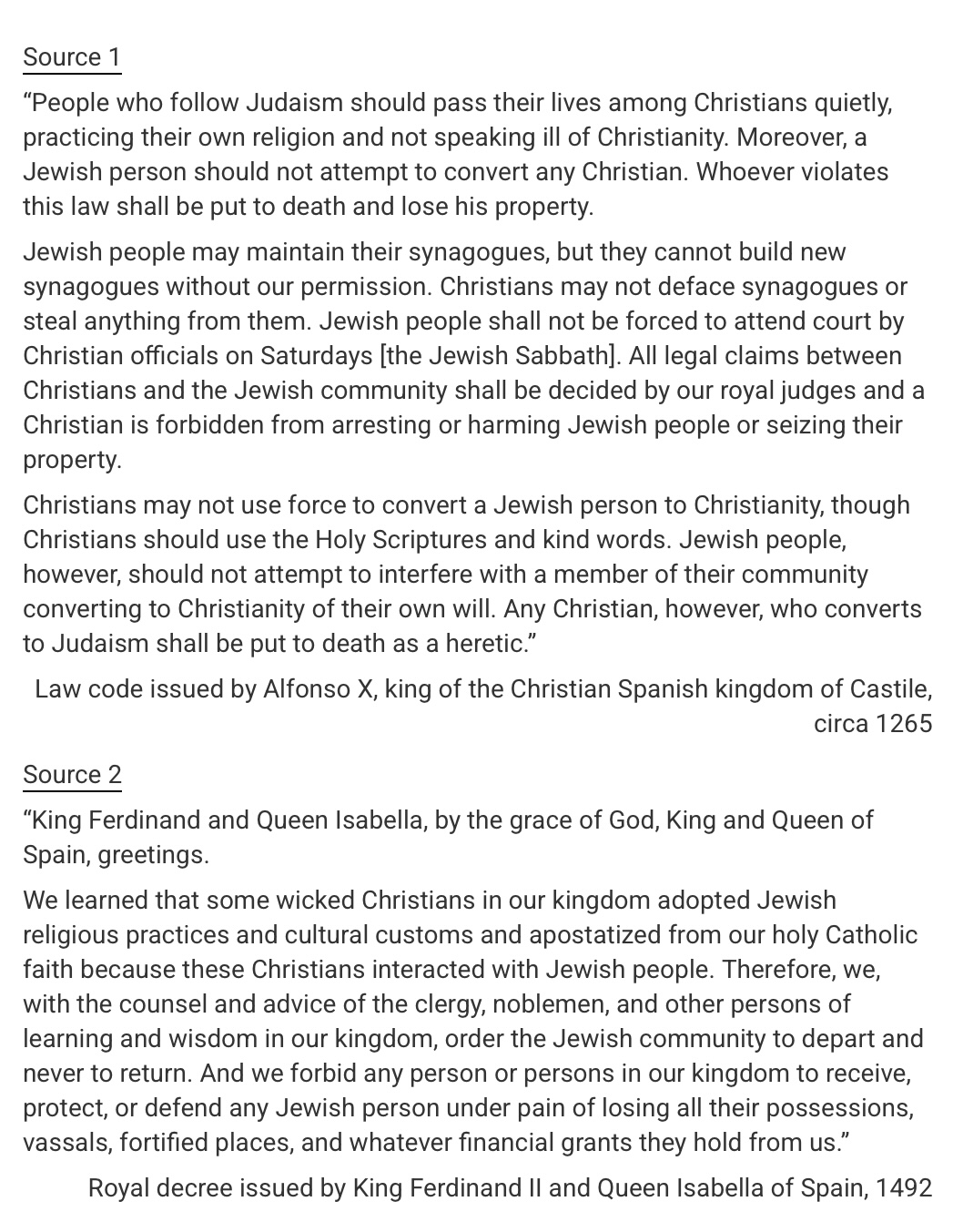
What continuity in world history do the two passages best illustrate?
While some states were willing to tolerate diversity within their territories, others suppressed diversity.
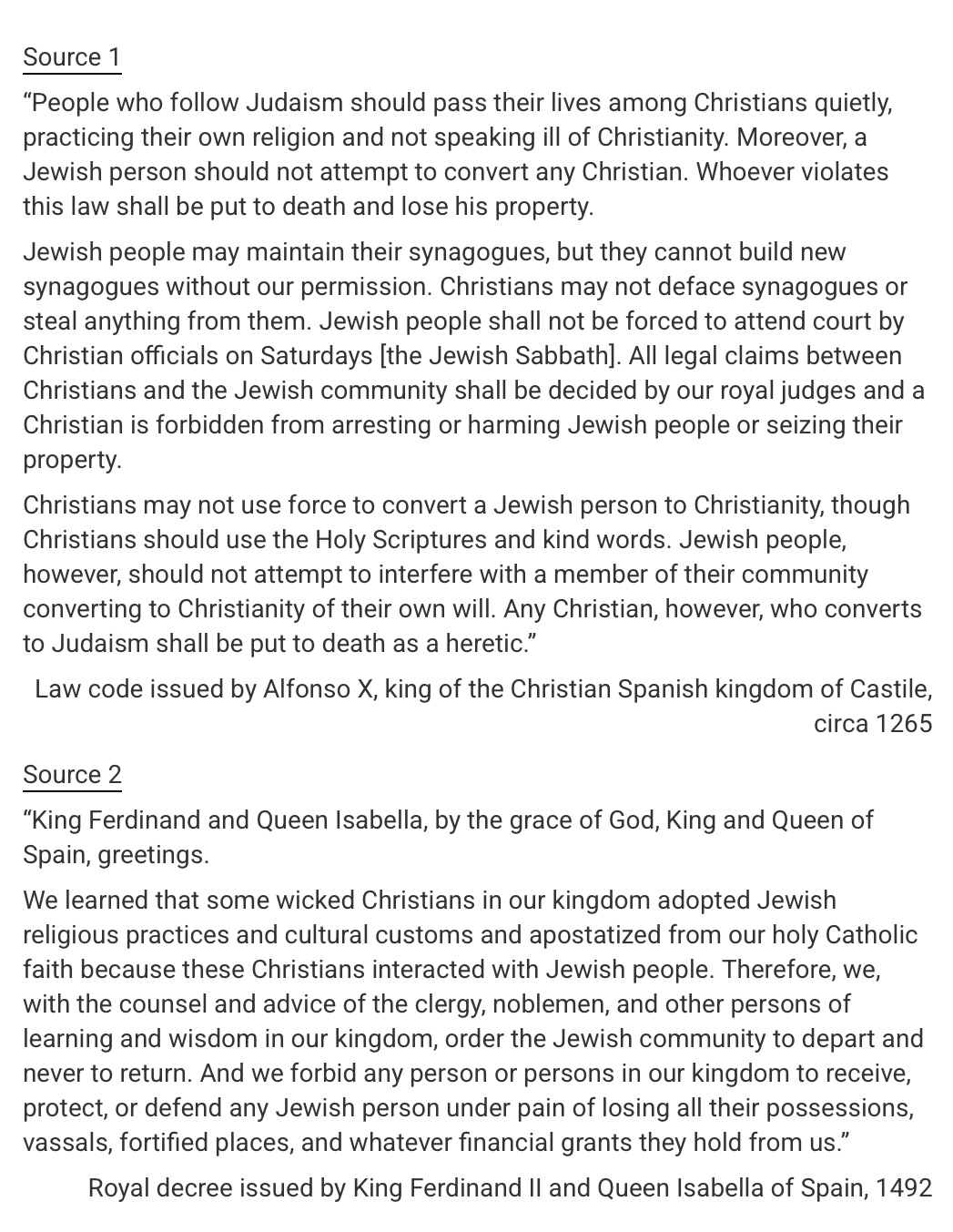
policy toward minority religious groups described in Source 1 is most consistent with the policy toward minority religious groups in Islamic states in the period before 1450 because it
granted limited personal freedom and protection
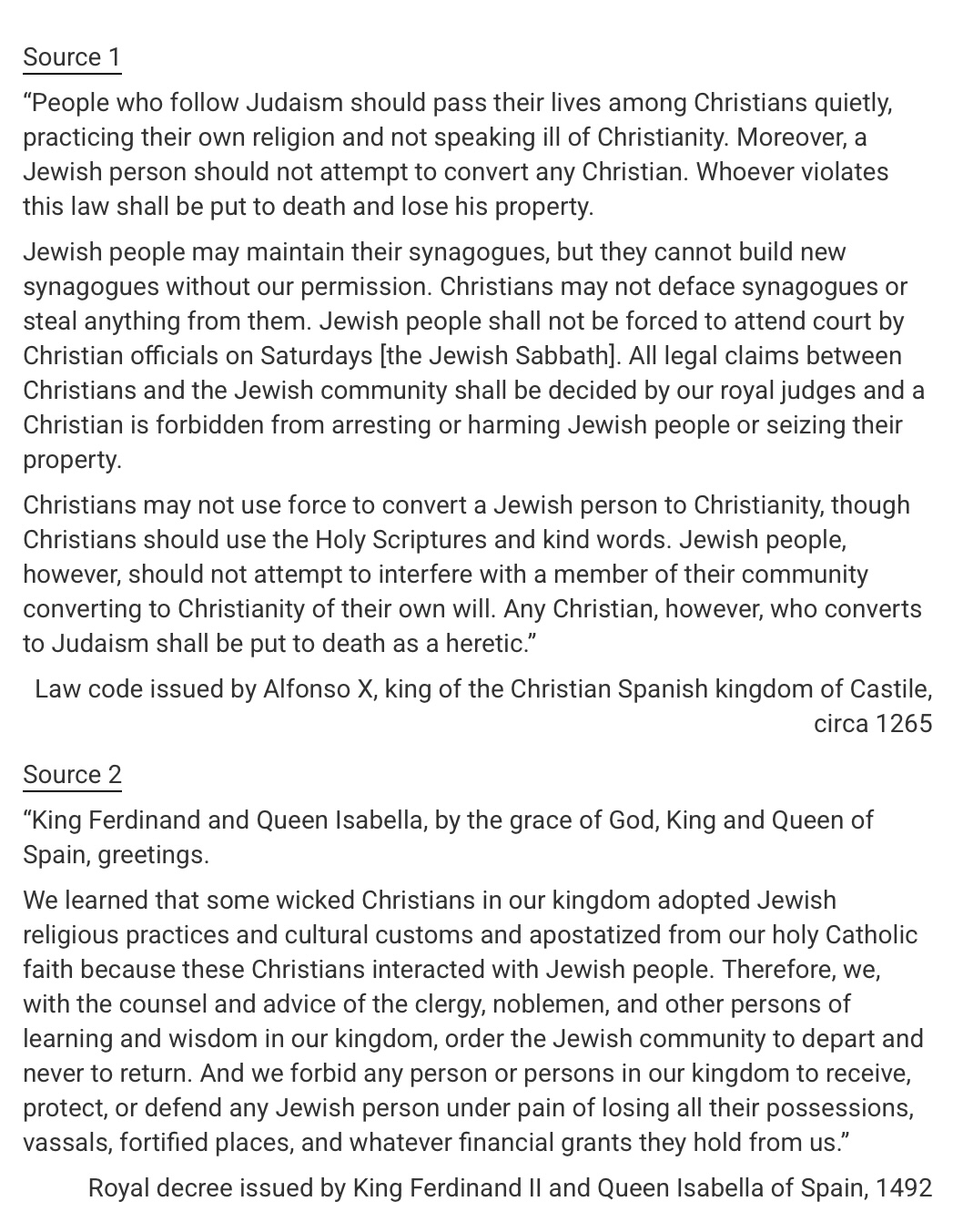
The attitude toward religious practice expressed in Source 2 was most directly apparent in which of the following Spanish policies in the Americas in the period circa 1500–1750 ?
The state sponsorship of Jesuit missions to native populations
Which of the following states in the period 1450–1750 adopted a religious policy that was most different from the religious policy expressed in Source 2 ?
The Mughal Empire under Akbar
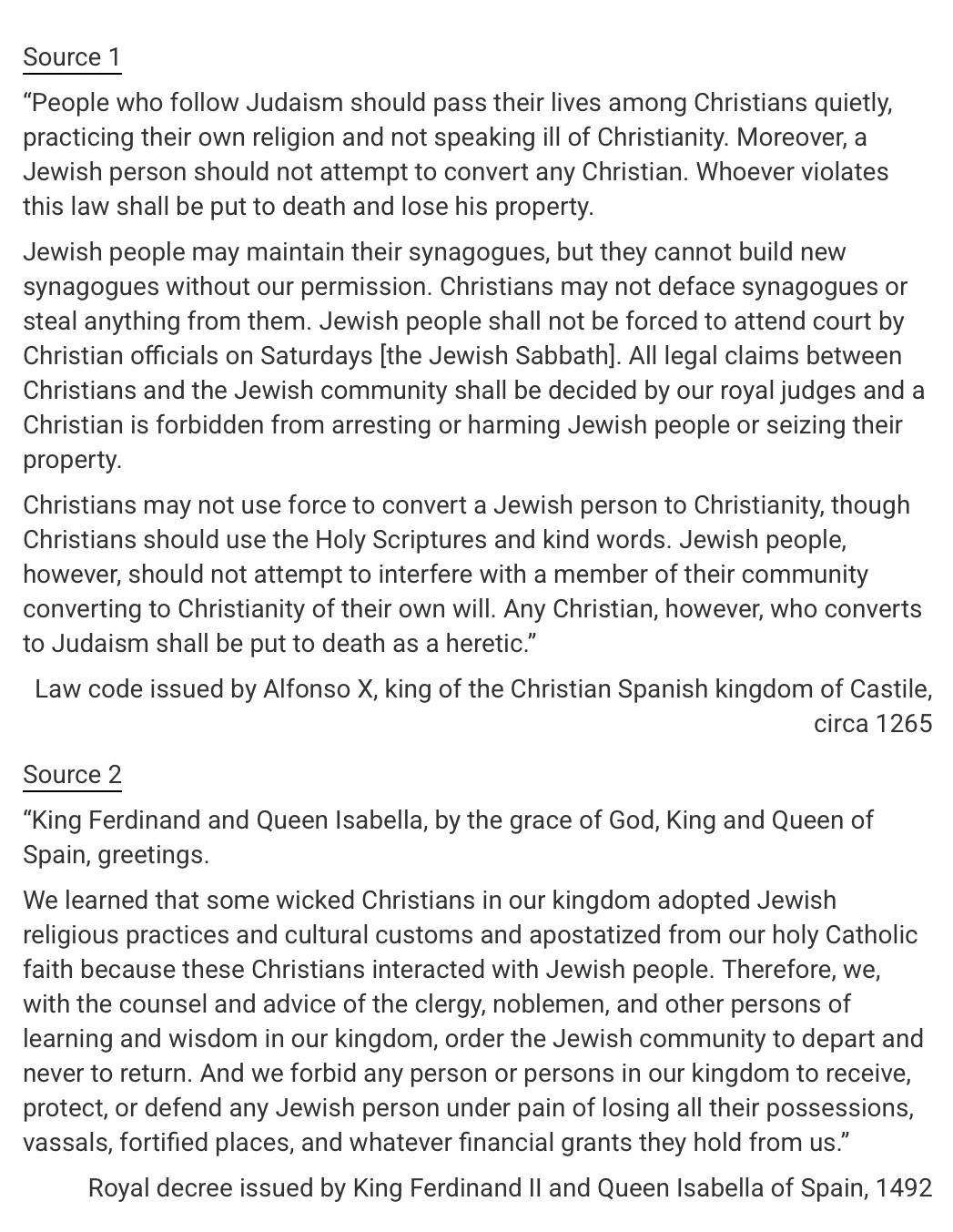

The burial depicted in the image most likely resulted from the spread of which of the following?
Bubonic plague

Which of the following best explains why, in the mid fourteenth century, events of the type depicted in the image were more common in urban areas of Afro-Eurasia than in rural or mountainous regions?
The disease principally spread along trade routes, and most commerce occurred in urban areas.
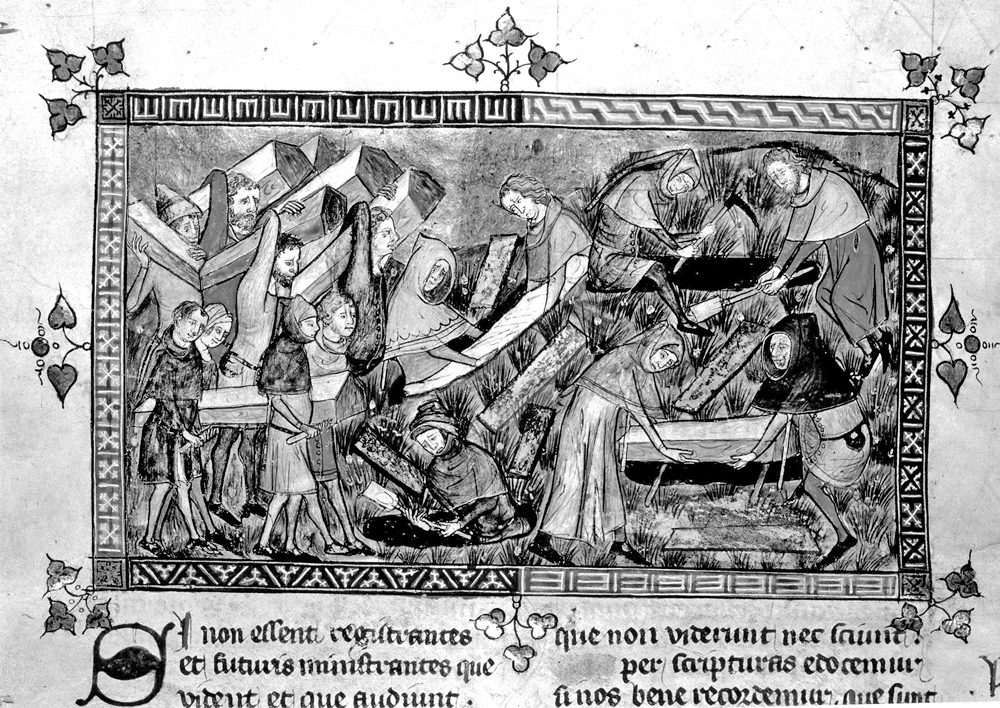
The mortality depicted in the image most directly contributed to which of the following changes in Europe in the late fourteenth and fifteenth centuries?
The decline of serfdom
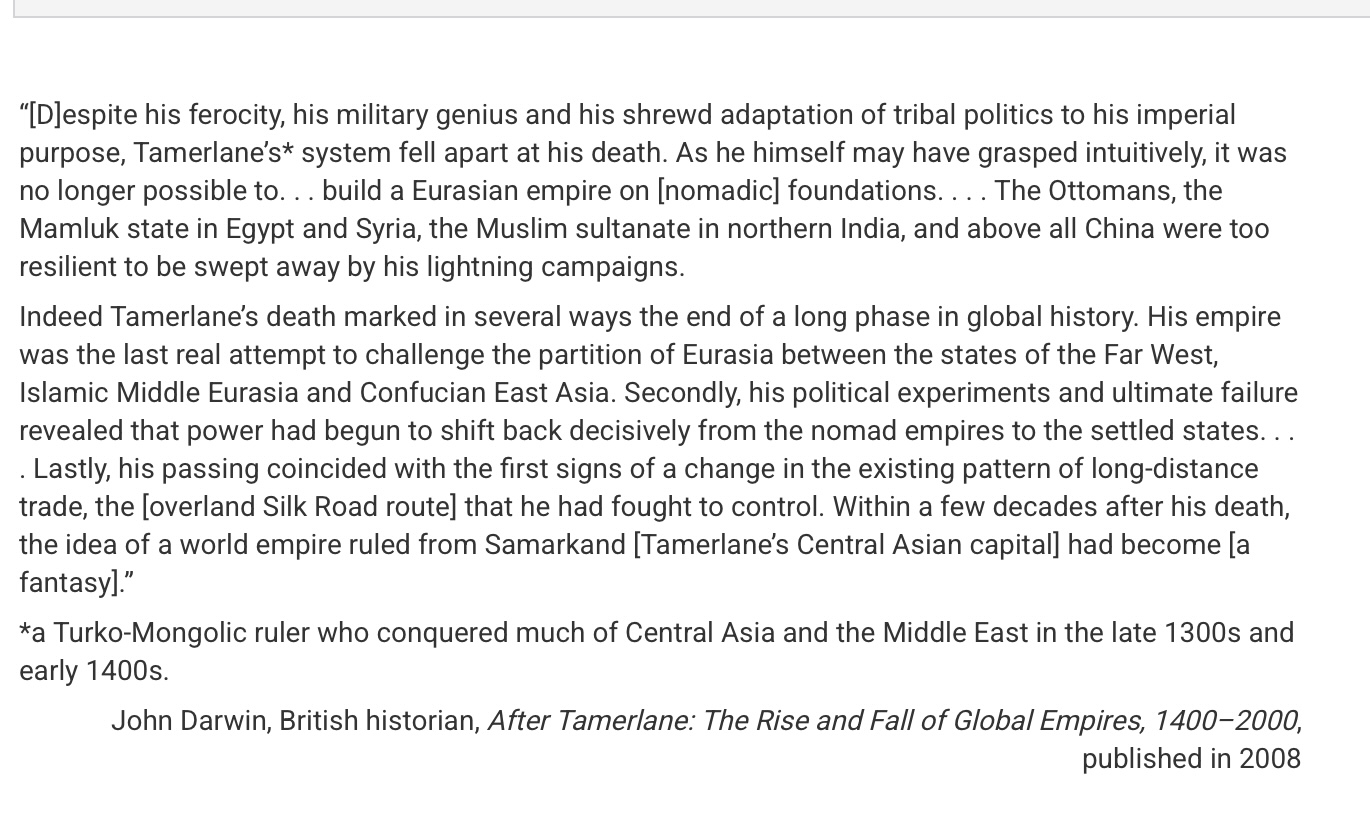
Which of the following developments in the late fifteenth century could best be used as evidence to support Darwin’s argument in the second paragraph regarding a change in patterns of long-distance trade?
The discovery of maritime routes that linked Europe and Asia through the Indian Ocean
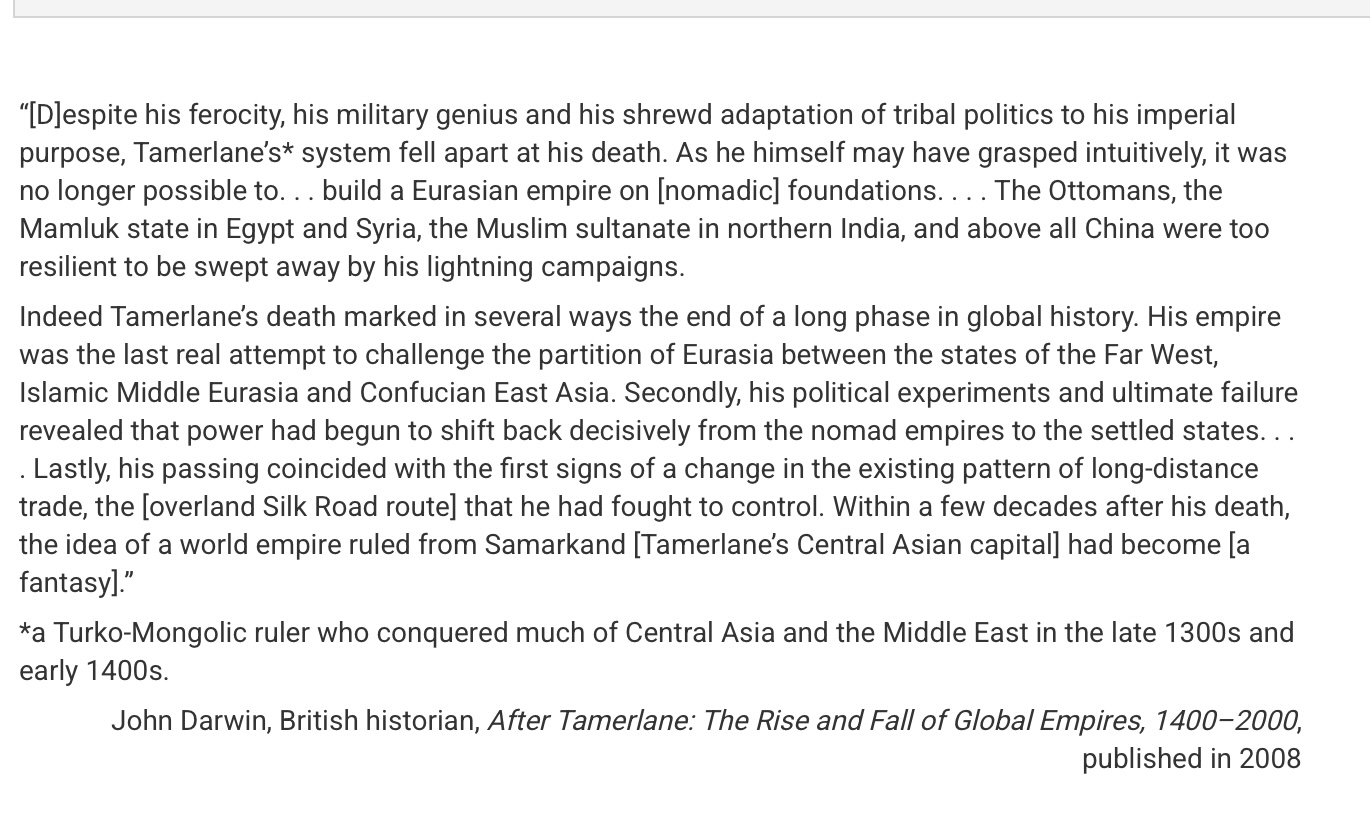
Which of the following most strongly contributed to the shift of power from nomadic empires to settled states that Darwin identifies in the second paragraph?
The development and spread of gunpowder weapons across Eurasia
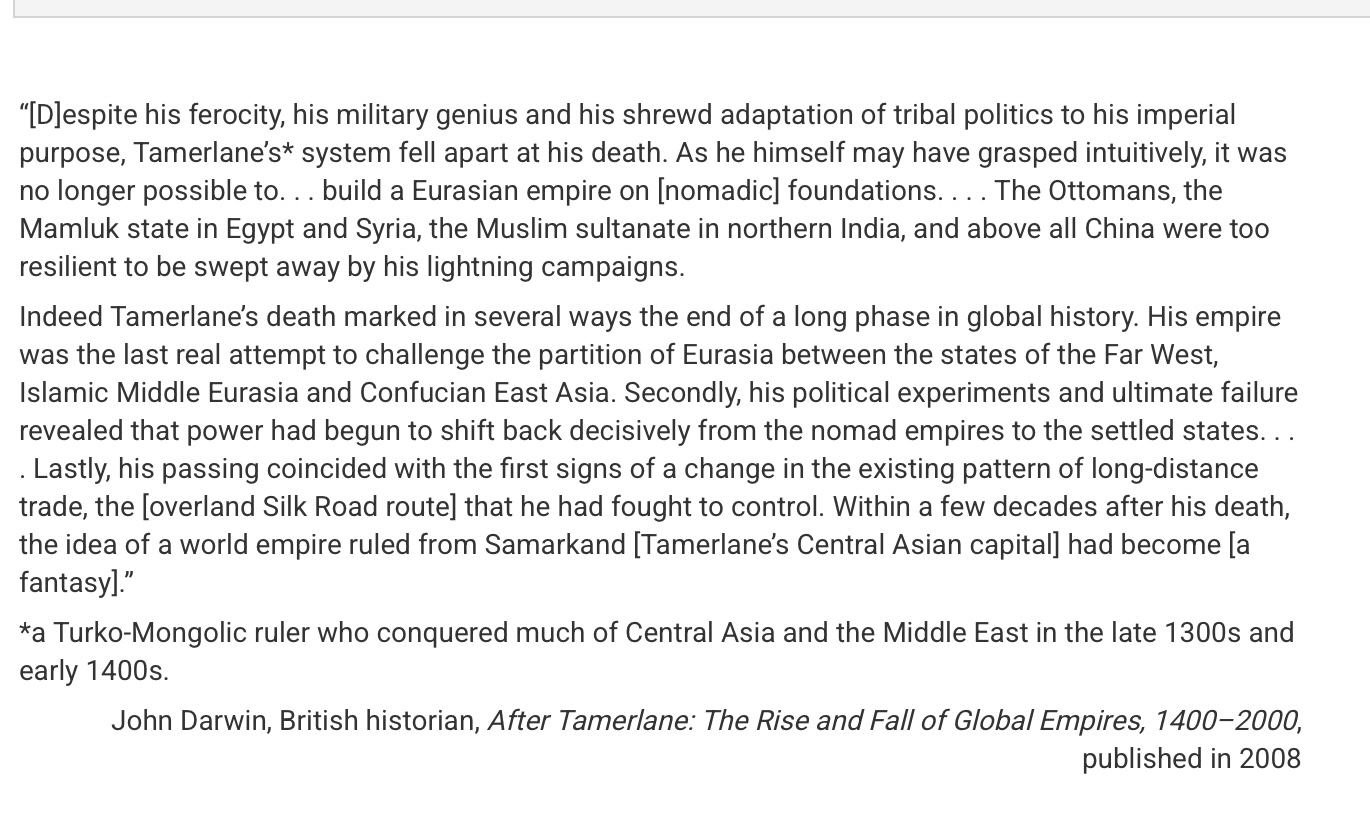
Which of the following developments in the period 1450–1750 could best be used as evidence to modify Darwin’s argument in the first paragraph about the establishment of Eurasian empires on “nomadic foundations”?
The establishment of the Safavid Empire
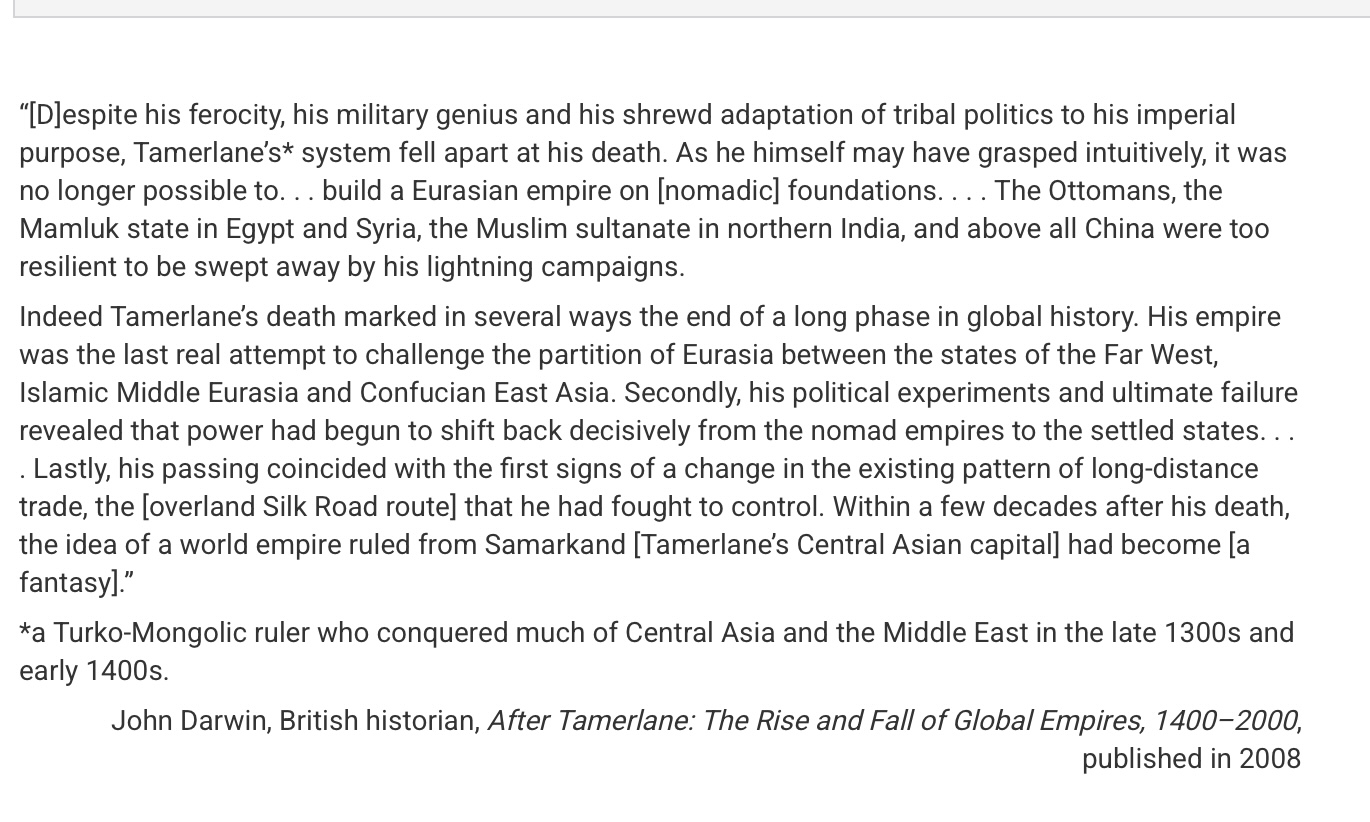
All of the following statements about nomadic empires in the period 1200–1700 are factually accurate. Which statement most likely explains why Tamerlane’s empire rapidly declined in the late fifteenth century?
Nomadic empires typically contained numerous tribes and confederations that were difficult to control.
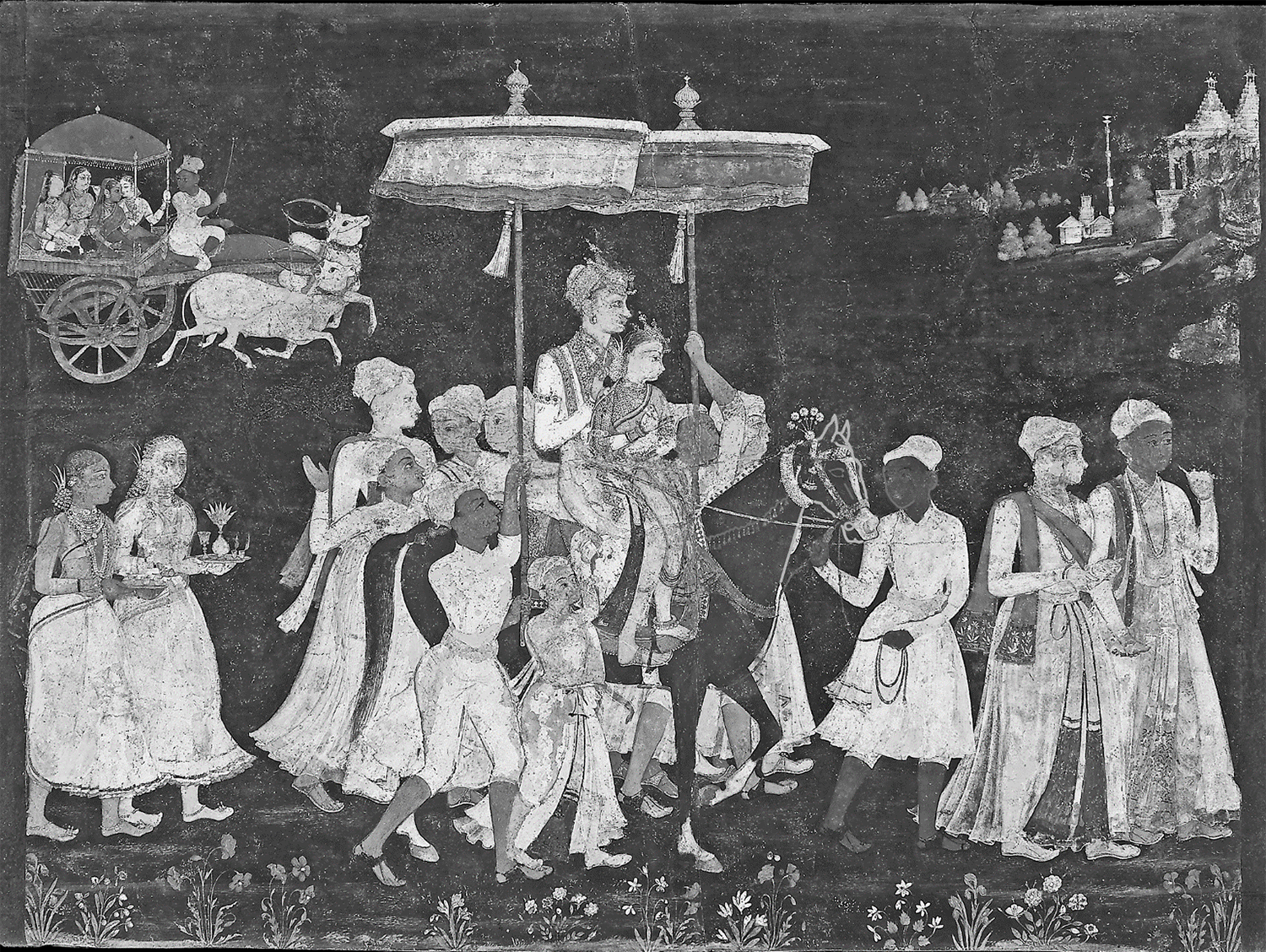
Based on the location of the painting, it can be inferred that its primary purpose was to
bolster the legitimacy of the Golkonda dynasty by celebrating its past
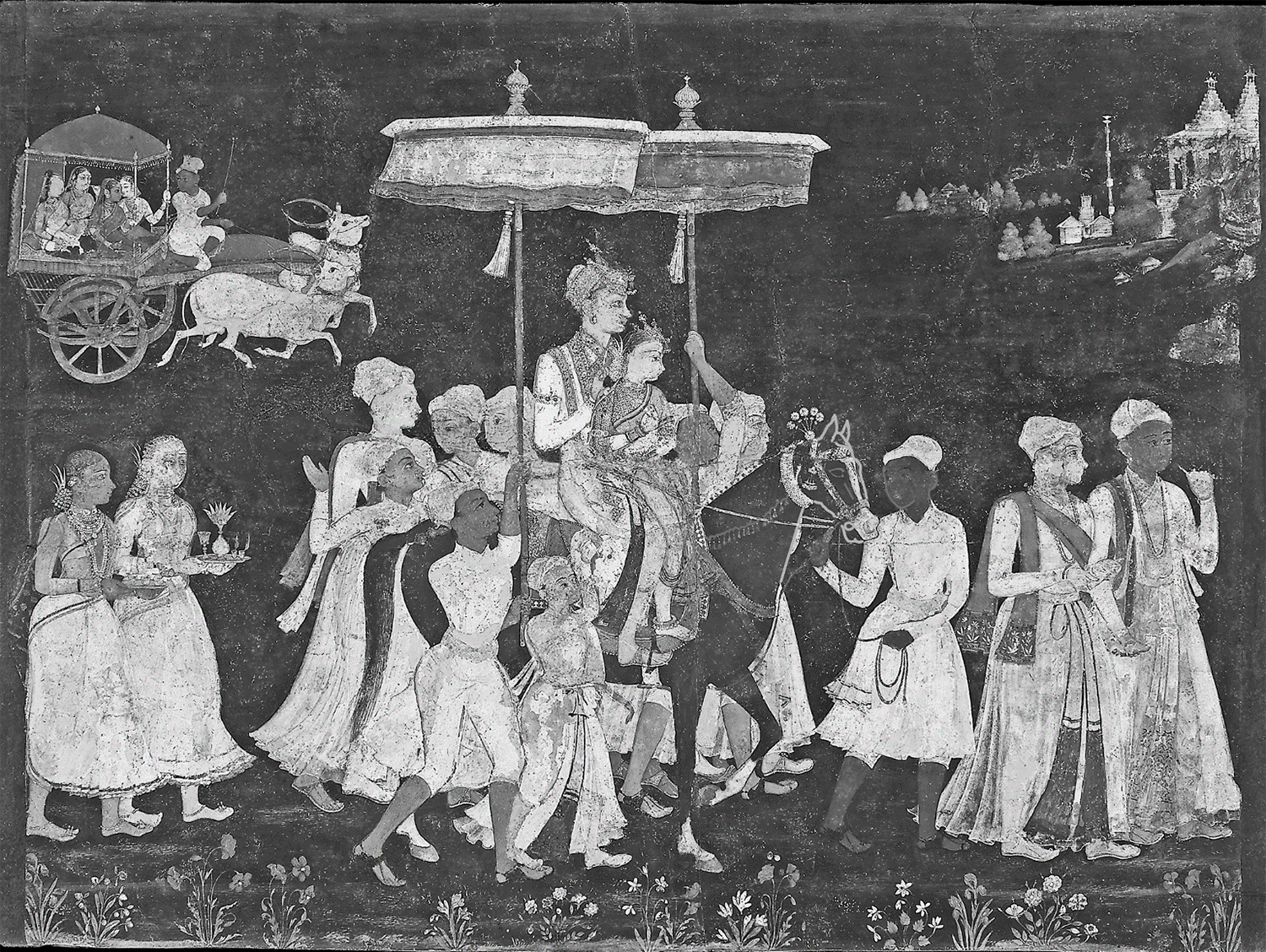
The particular event depicted in the painting was likely important to Golkonda rulers mostly because it
could be used as a symbol of the union between the state’s ruling class and the majority of its population
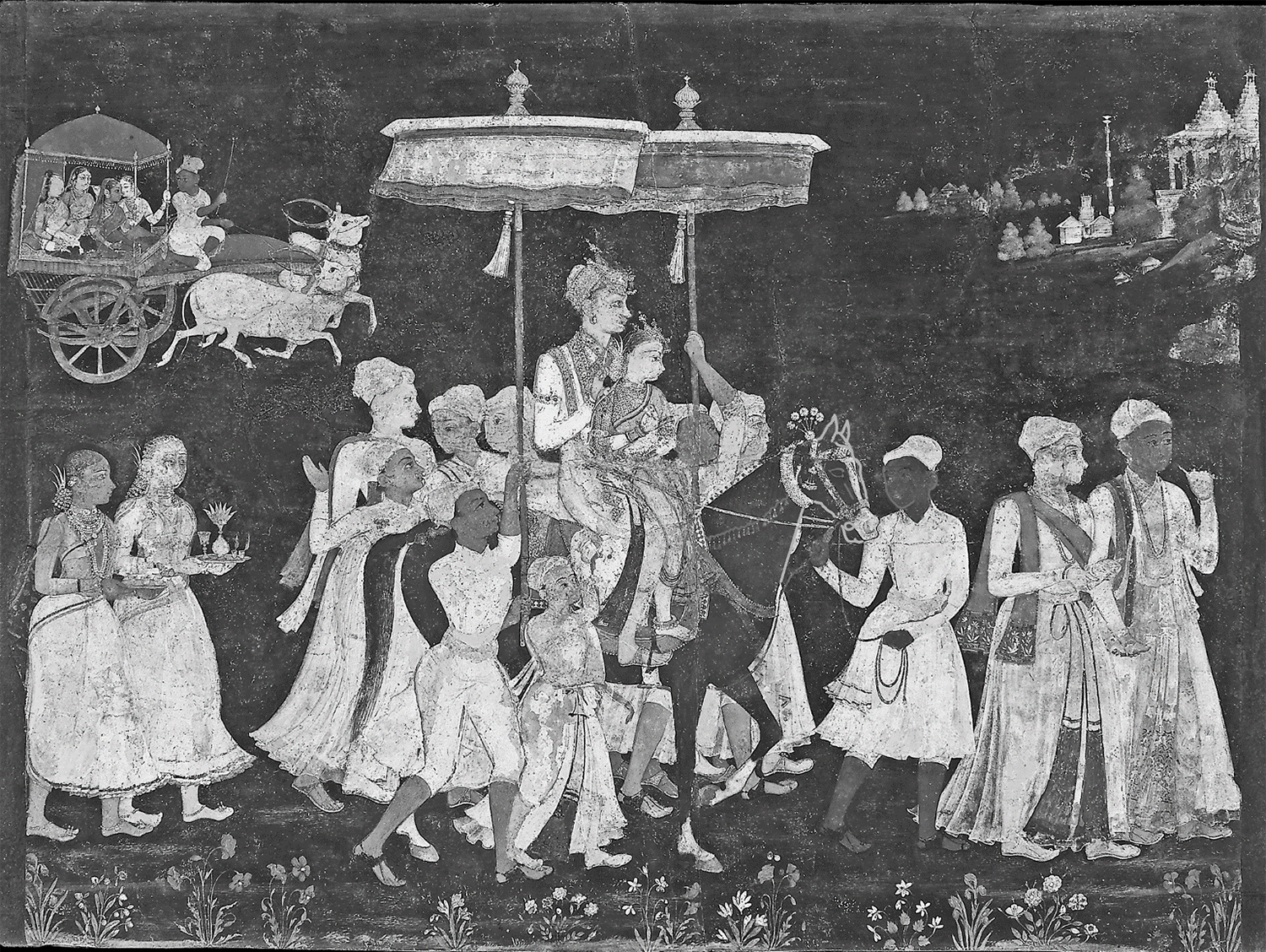
Which of the following most likely describes the fate of the Golkonda state after 1650 ?
It was conquered by the Mughal Empire.
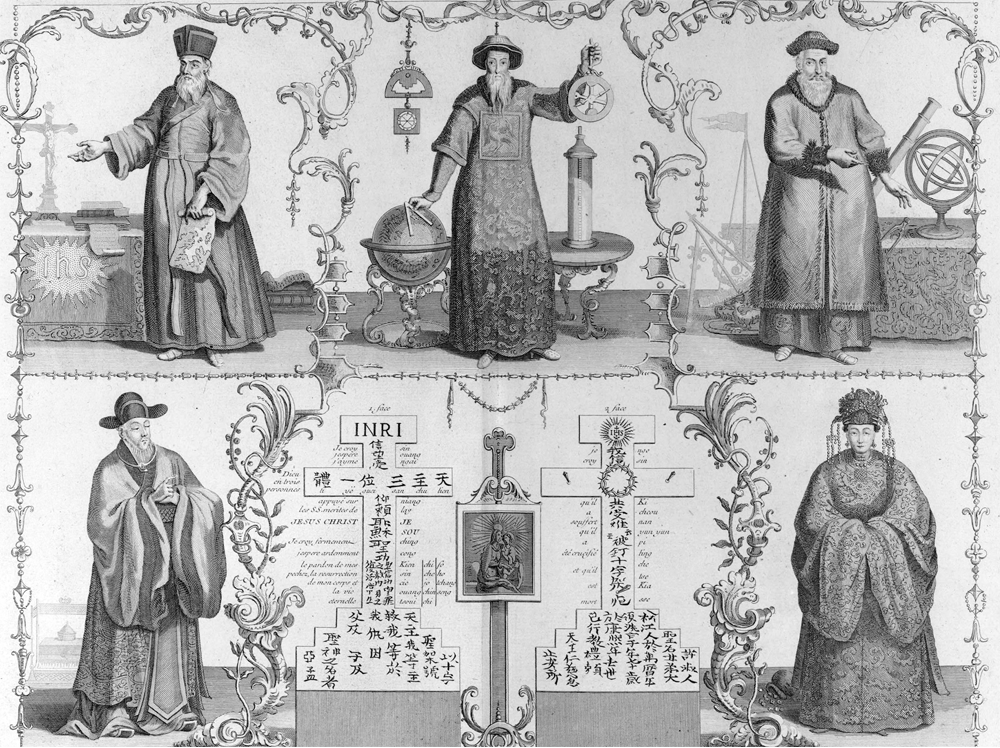
In the context of the period 1450–1750, which of the following most likely explains why the Qing government employed the scholars shown in the image
States sought to centralize their rule by including foreigners whose positions were dependent on the state to serve in the bureaucracy.
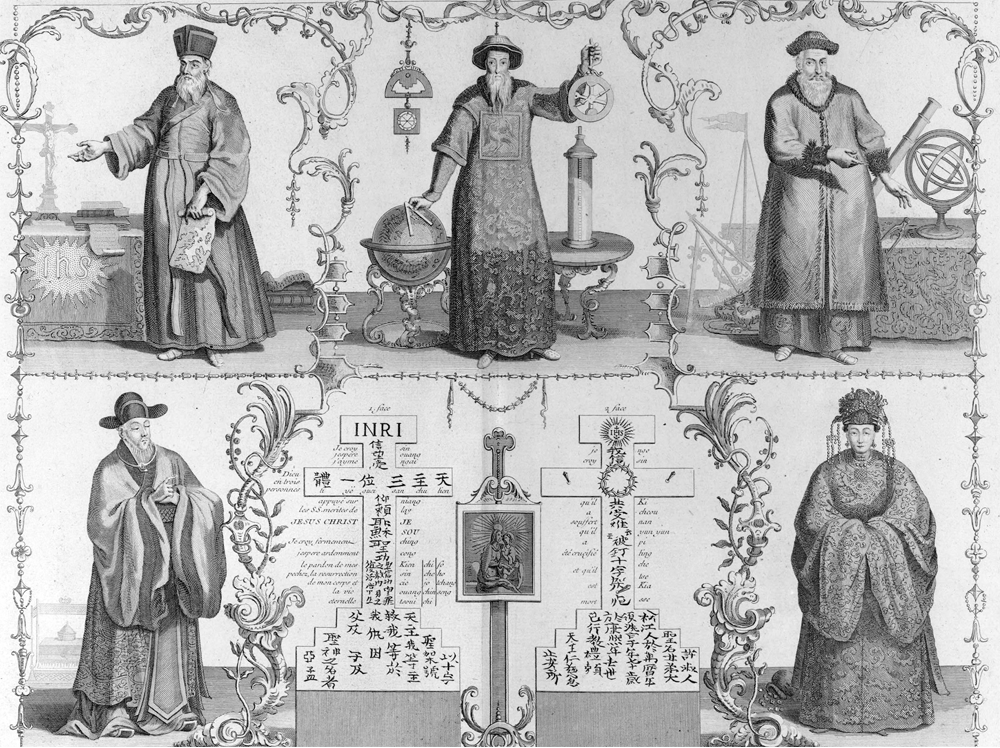
Which of the following developments in Europe in the sixteenth and seventeenth centuries most directly helps to explain the presence of the scholars shown in the image of China?
The Protestant Reformation led the Catholic Church to seek new converts outside of Europe.
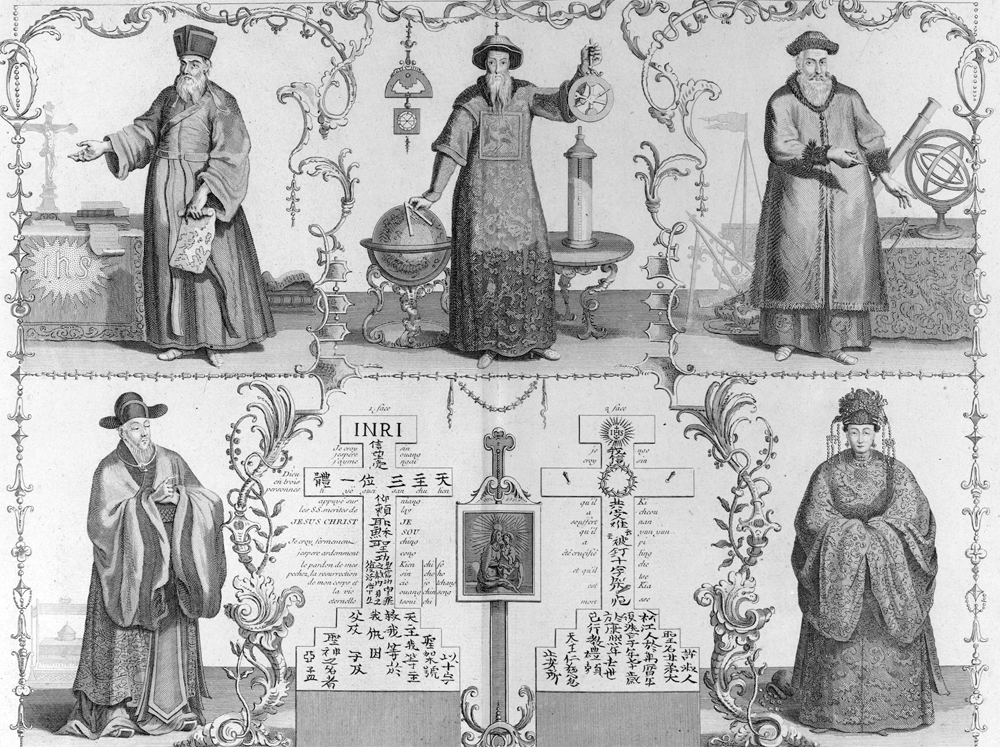
The spread of new cultural ideas, such as those illustrated by the religious beliefs of Xu Guangxi and Candida Xu, most strongly encouraged some Asian governments in Eurasia in the period 1450–1750 to
limit trade and other contacts with foreigners
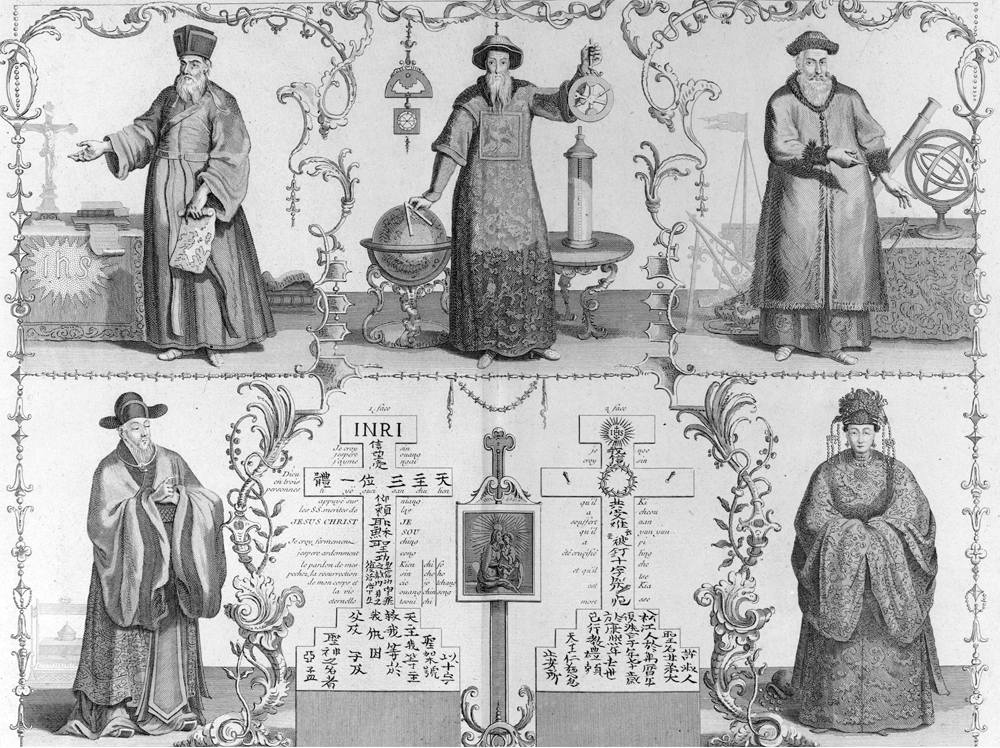
All of the following statements about Du Halde are factually accurate. Which would most likely lead historians to question the objectivity of his portrayal of the scholars shown in the image?
He was a Jesuit and based his book on Jesuit missionary reports.
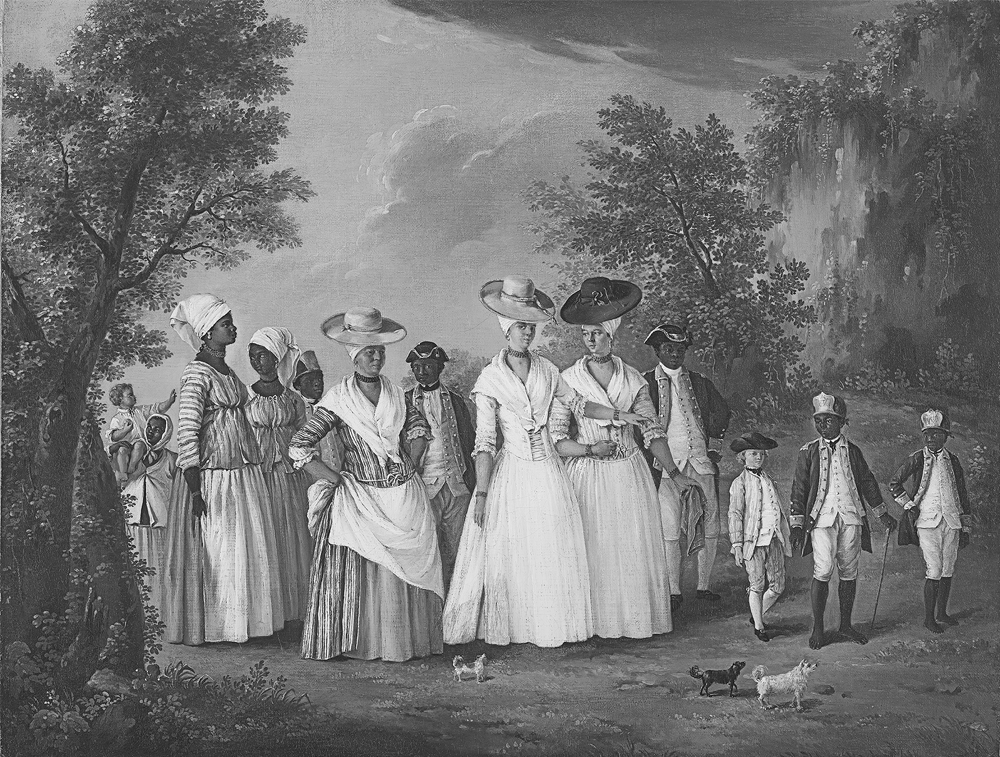
Which of the following best describes the artist’s likely purpose in painting this particular subject?
To argue for the respectability of free people of color
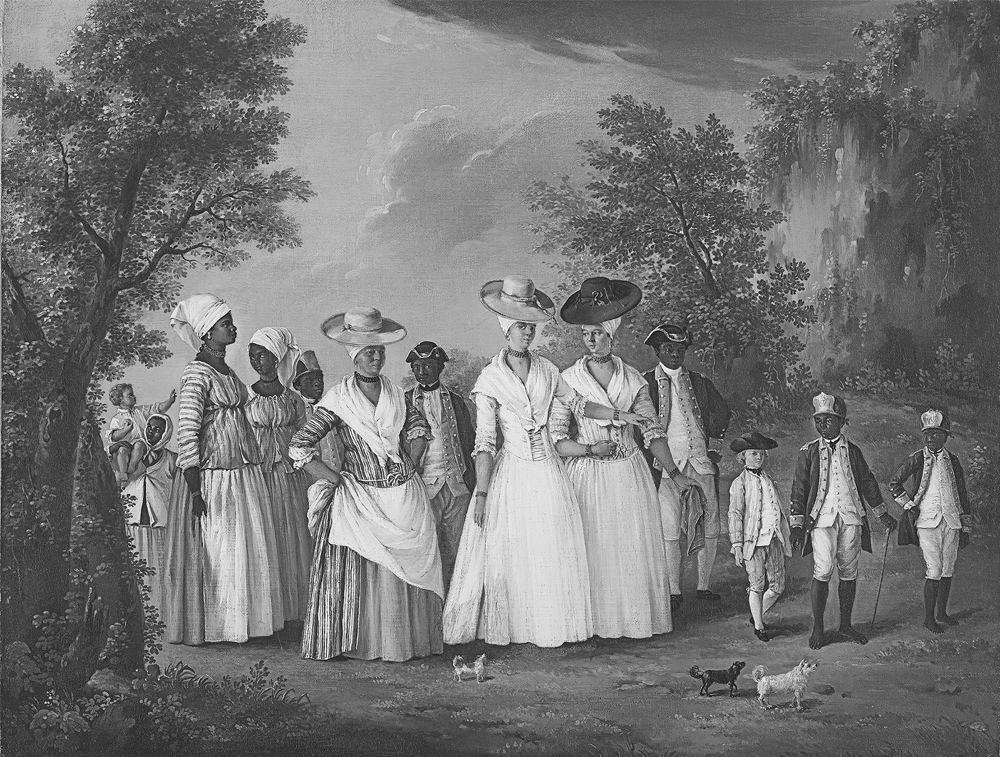
The artist’s perspective on the subject of the painting was most likely influenced by which of the following?
The Enlightenment
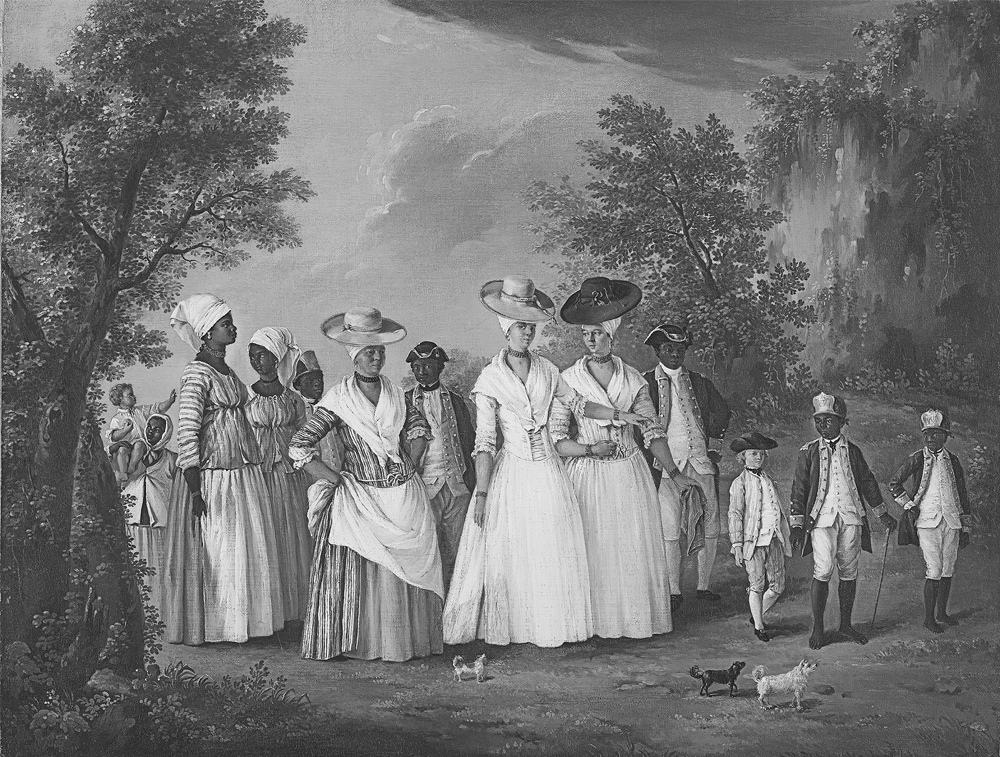
Which of the following best explains why the painting was seen as a challenge to social conventions when it was painted?
Caribbean society was built on racial hierarchies that generally reserved elite status for people of European ancestry.
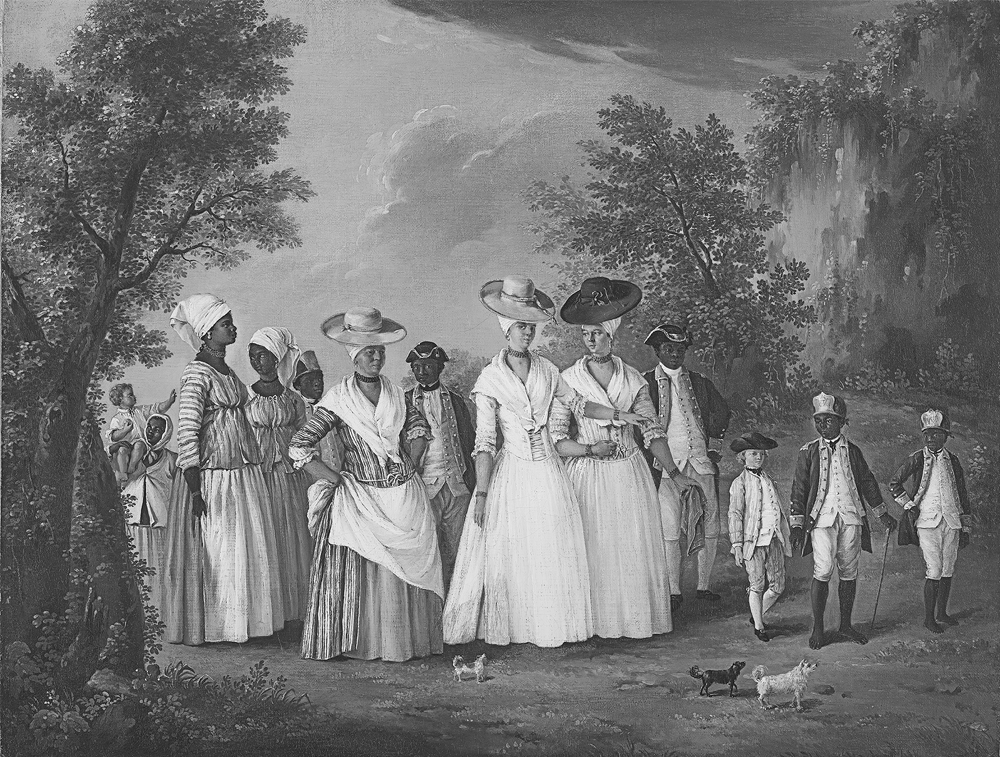
Which of the following most directly led to the arrival of substantial numbers of Africans in the Americas at the time of the painting?
The expansion of the plantation system for growing sugarcane and other crops
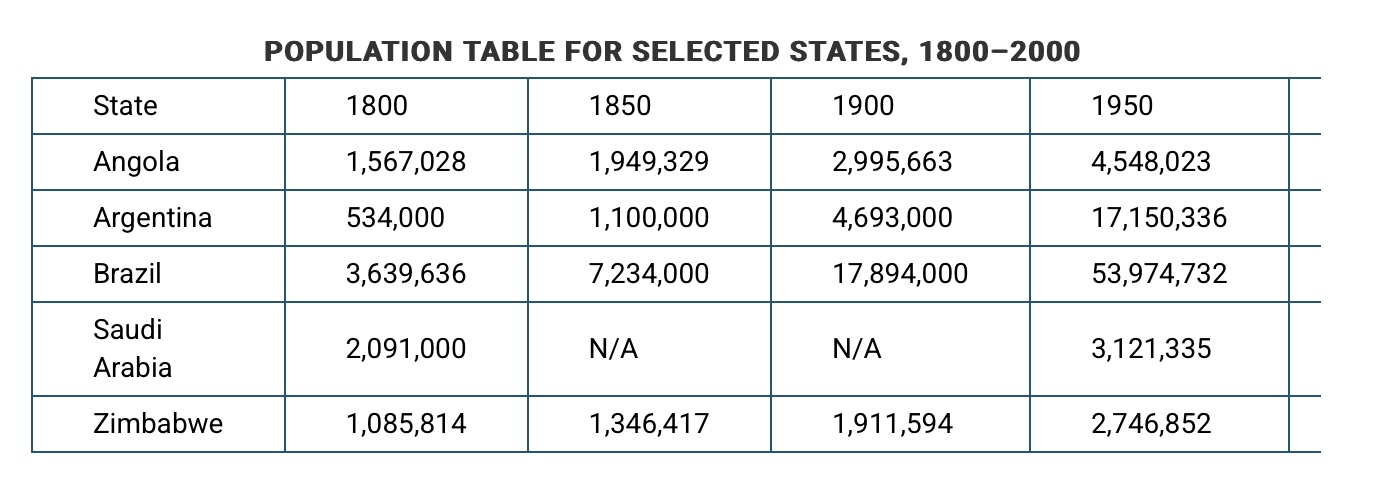
Which of the following likely contributed the most to the population changes shown in the table for Latin American states such as Argentina and Brazil in the period 1800–1900 ?
Large increases in immigration from Europe
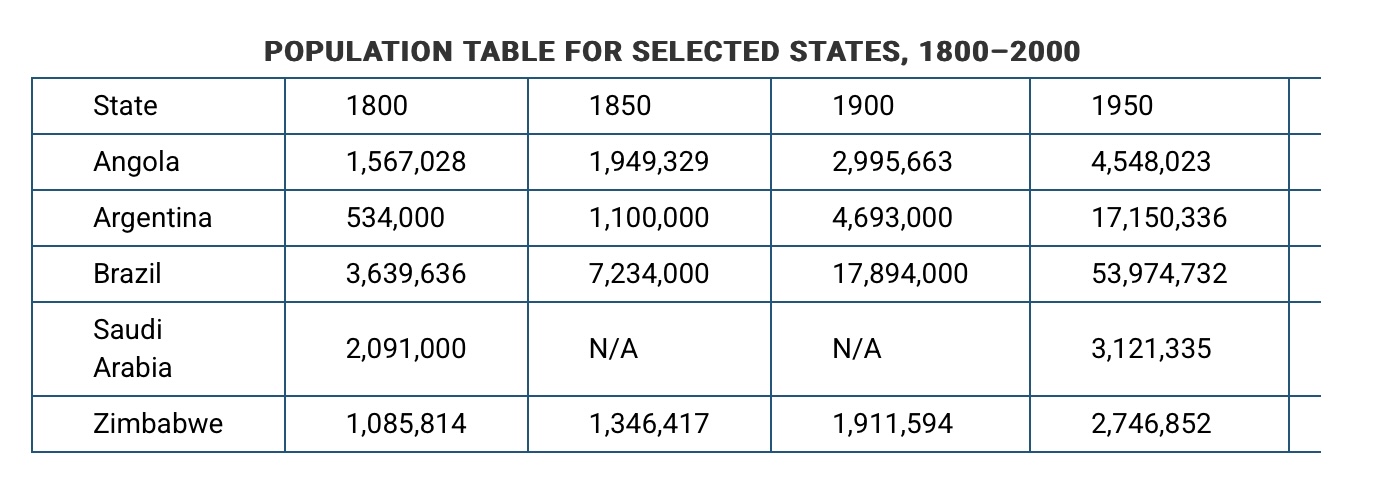
Which of the following most likely accounts for the extent of the population changes for Argentina, Brazil, and Saudi Arabia in the period 1950–2000 ?
The introduction of agricultural techniques associated with the Green Revolution
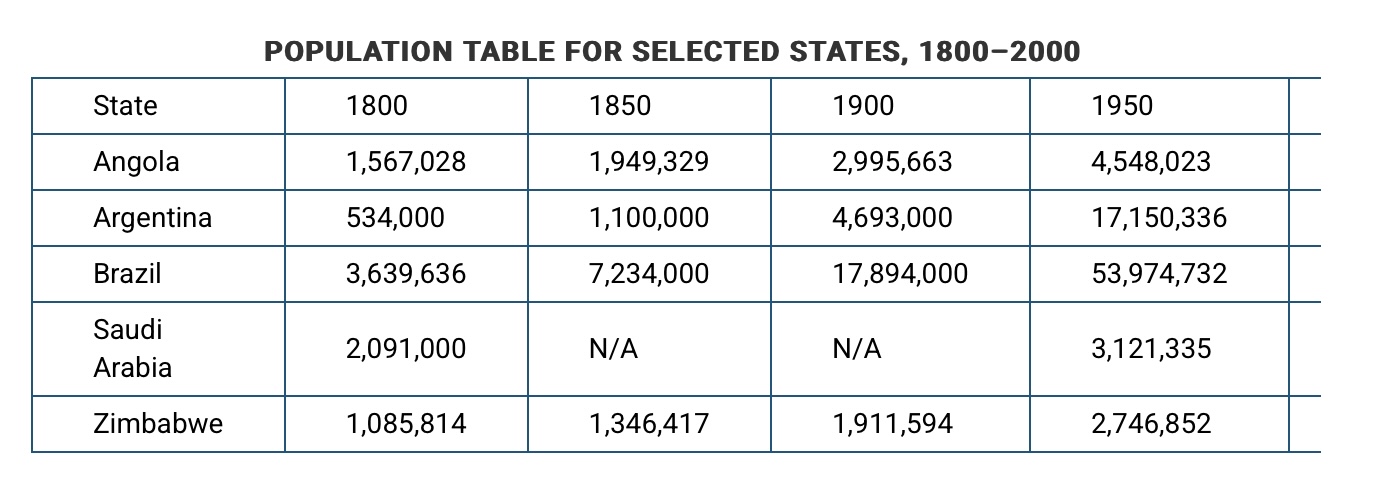
The population trend shown in the table for sub-Saharan African states such as Angola and Zimbabwe in the period 1950–2000 most likely reflects which of the following?
The greater availability of vaccines

During the second half of the twentieth century, population trends in which of the following regions most strongly contrasted with the overall trends illustrated in the table?
North America
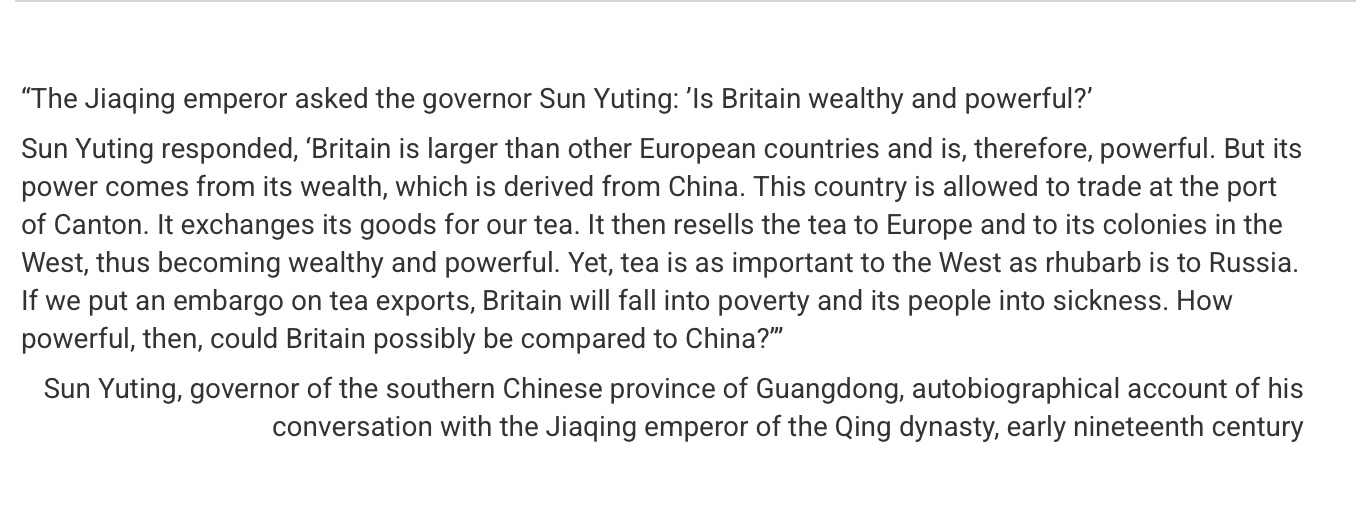
Sun Yuting’s analysis of the factors that contributed to the relative economic strength of China and Great Britain best illustrates which of the following continuities from the period 1450–1750 ?
The global circulation of goods was fueled by European merchants’ access to Asian markets.
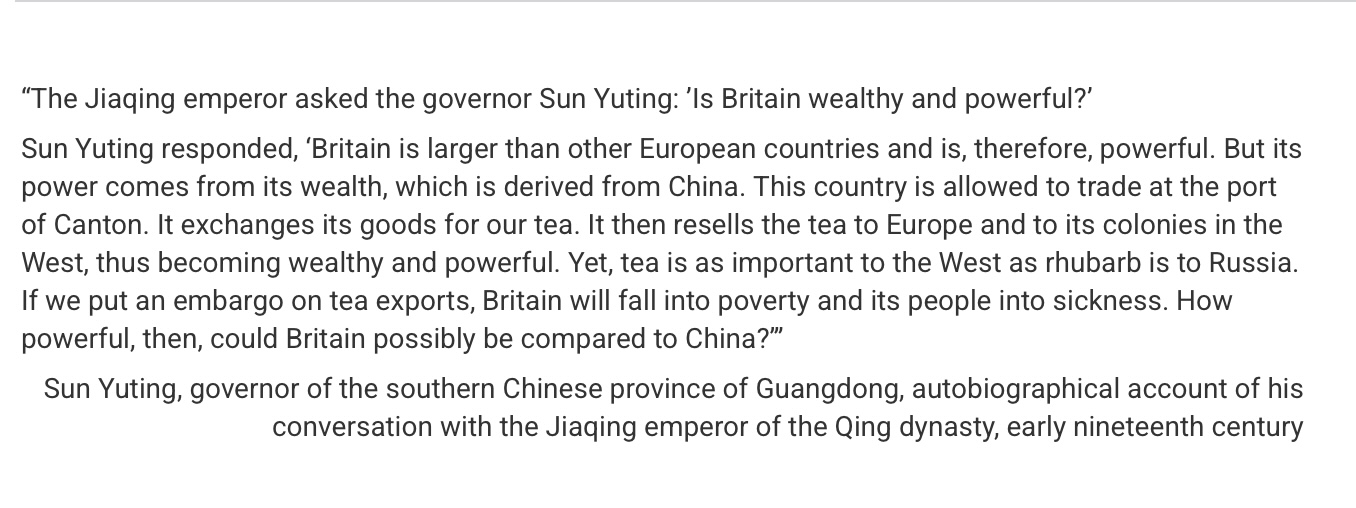
The emperor’s question to Sun Yuting was most likely intended to assess which of the following?
The relative risks of continuing to pursue a trade policy that forced foreign states to acknowledge China’s political superiority
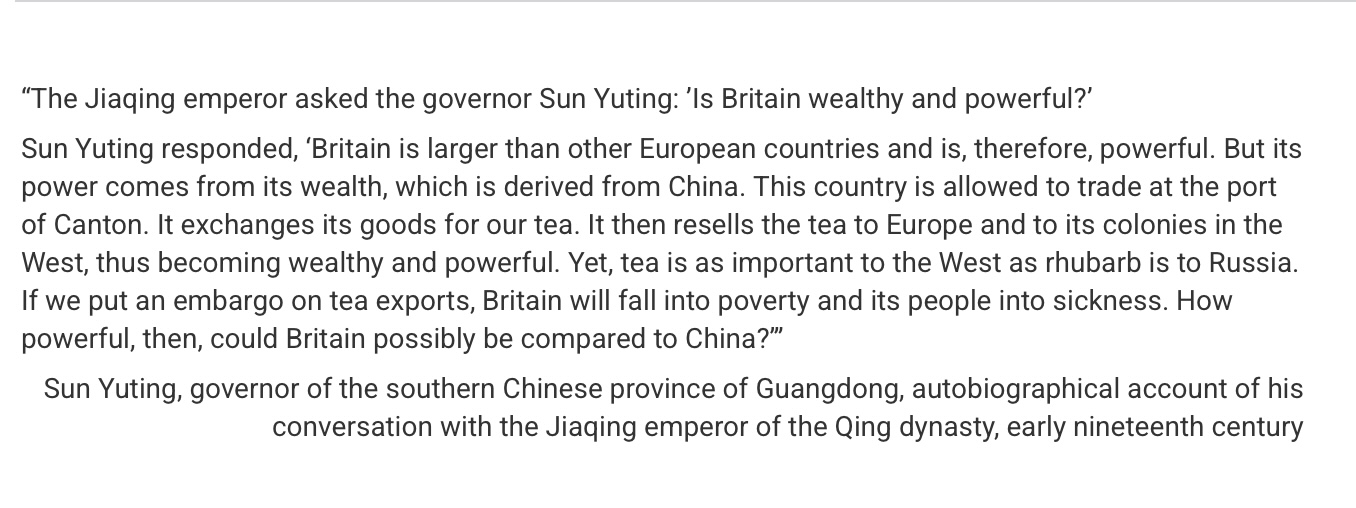
Sun Yuting’s analysis of the potential effect of a trade embargo on Great Britain could best be characterized as
inaccurate, because Sun Yuting failed to account for the fact that Great Britain’s economy had largely industrialized

Which of the following best characterizes the economic situation of most Asian states such as China at the end of the nineteenth century?
Although their overall wealth declined, they continued to produce finished goods.
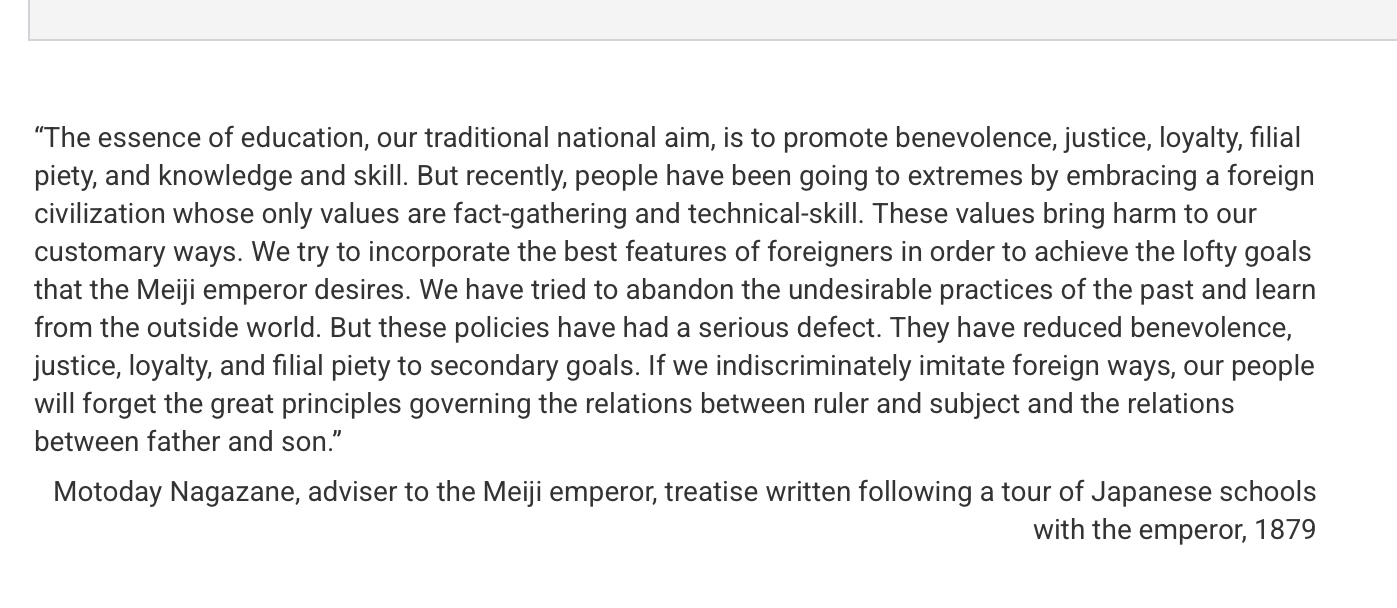
The ideals of traditional Japanese education that the author praises in the passage are most closely aligned with the social ideals advocated by which of the following?
Confucianism
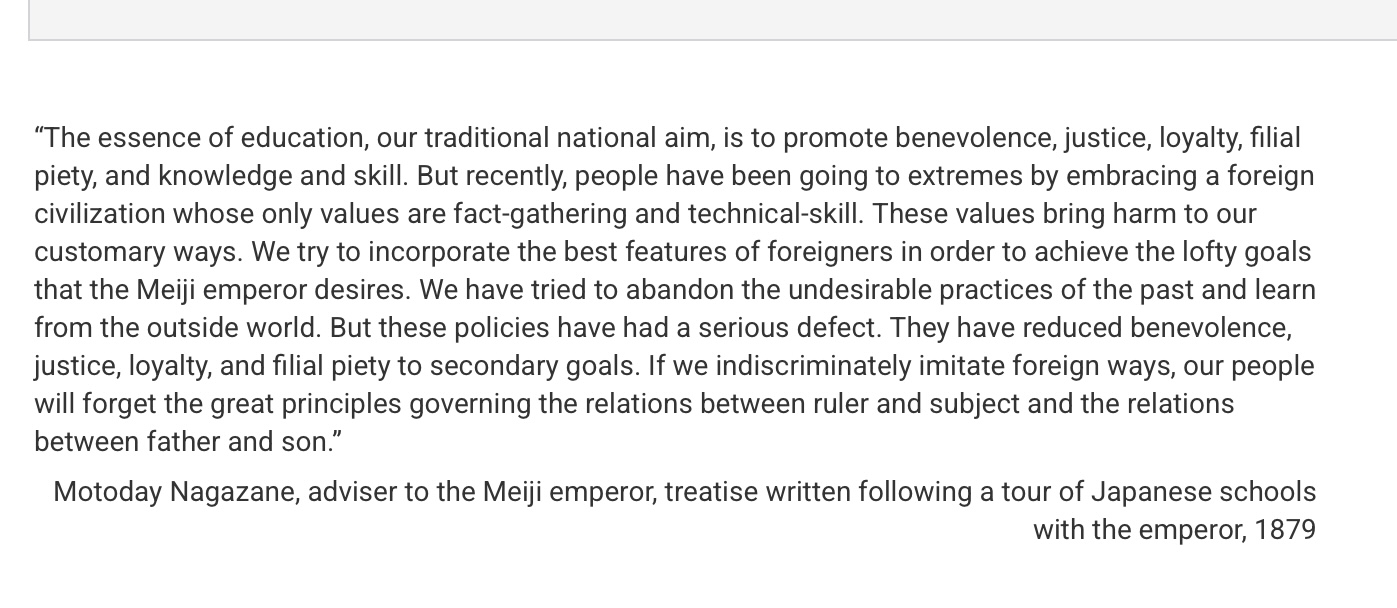
The Meiji government’s “emulation of foreign ways” was most directly a response to which of the following nineteenth-century developments?
Western states forcing Japan to open itself to trade
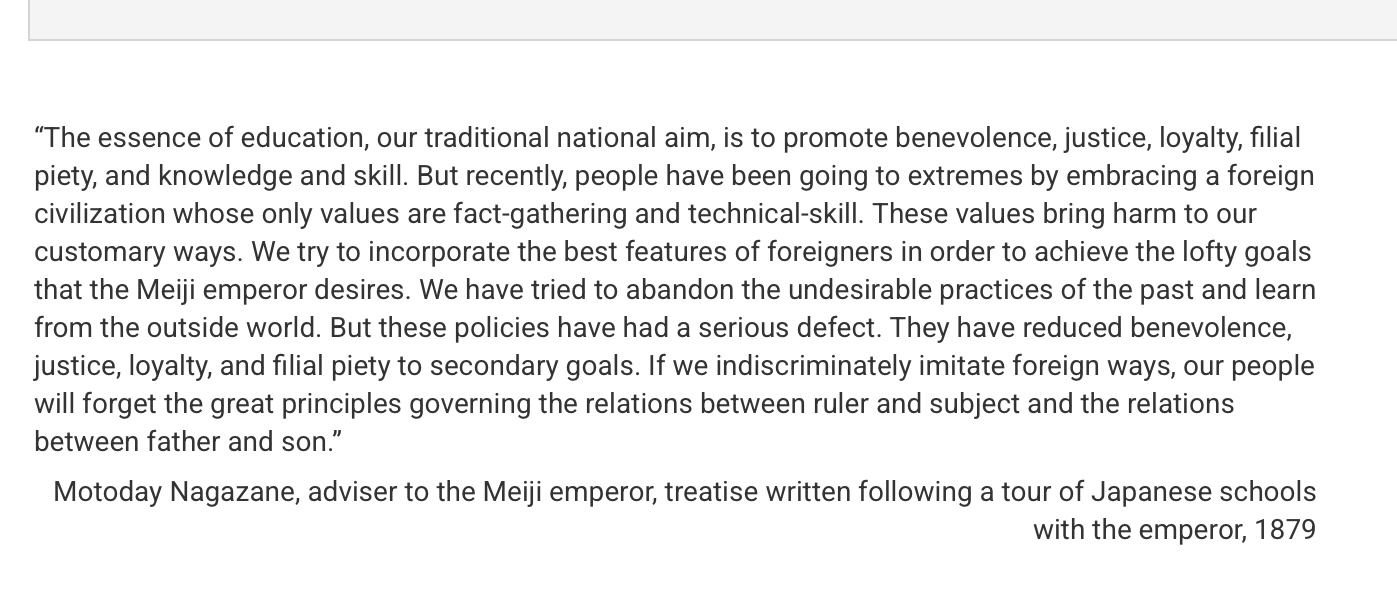
The values of “foreign civilization” that Nagazane criticized in the passage were most directly a product of the
Scientific and Industrial Revolutions
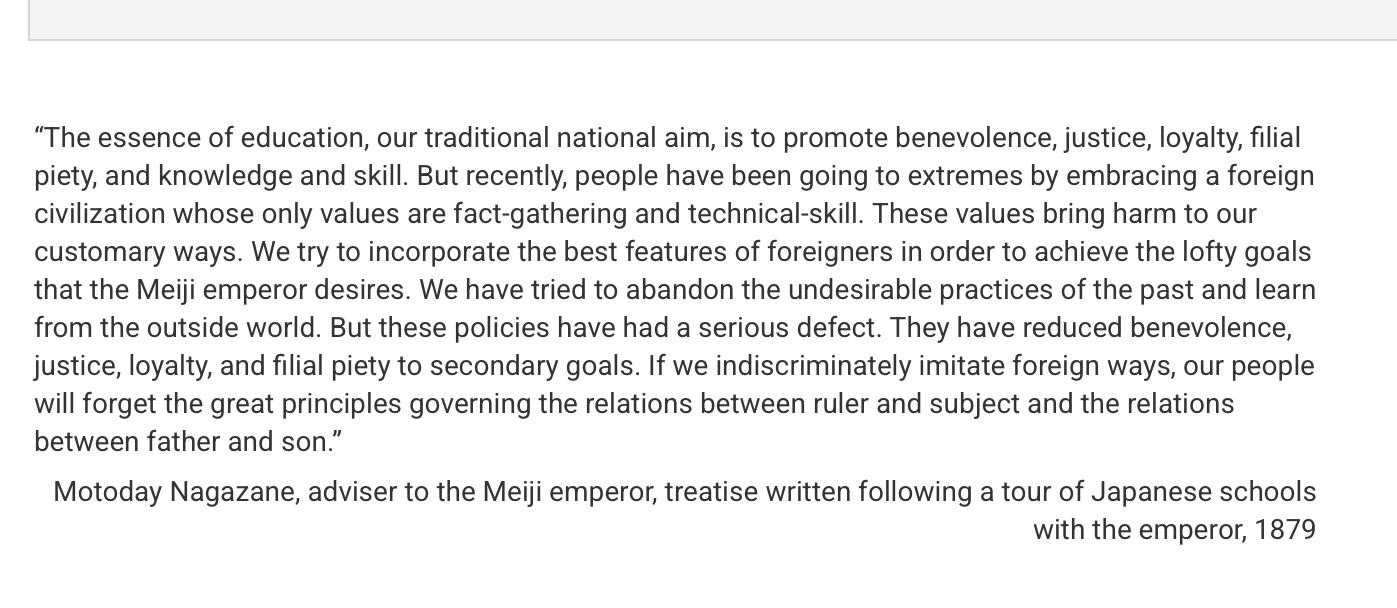
Which of the following states in the nineteenth century experienced social tensions resulting from the introduction of foreign cultural influences in a way most similar to that described in the passage?
The Ottoman Empire
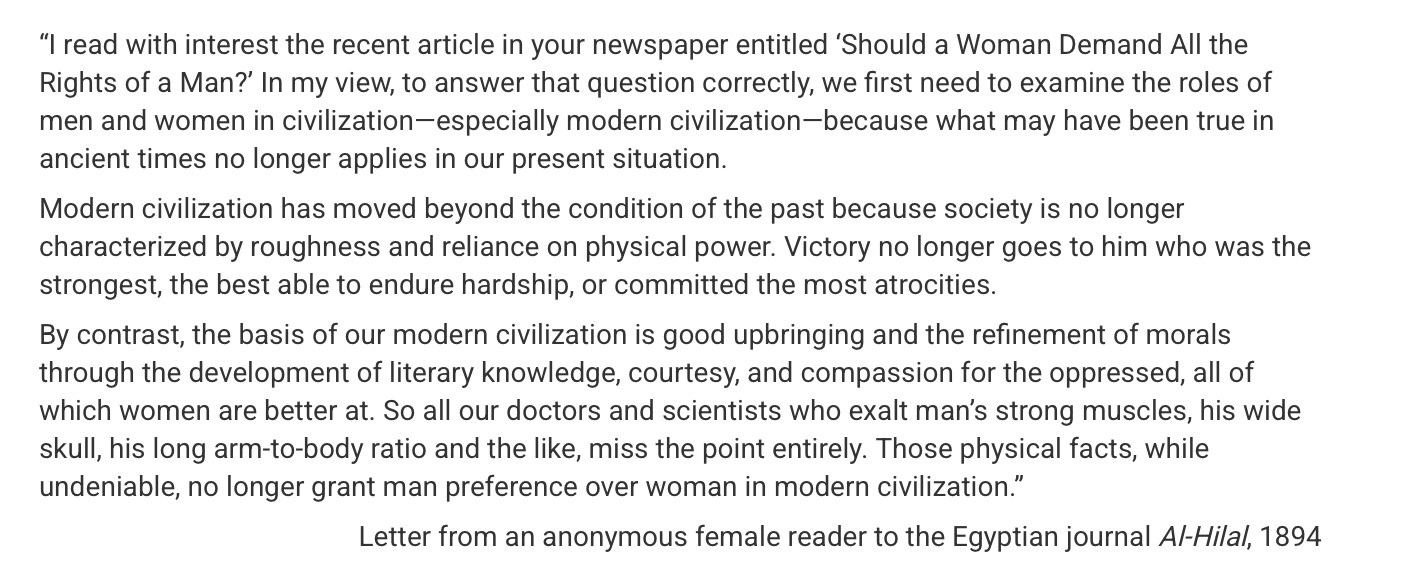
The disputes over women’s social status alluded to in the letter best reflect which of the following late nineteenth-century changes in Middle Eastern societies?
The spread of intellectual and political ideals that advocated for natural rights
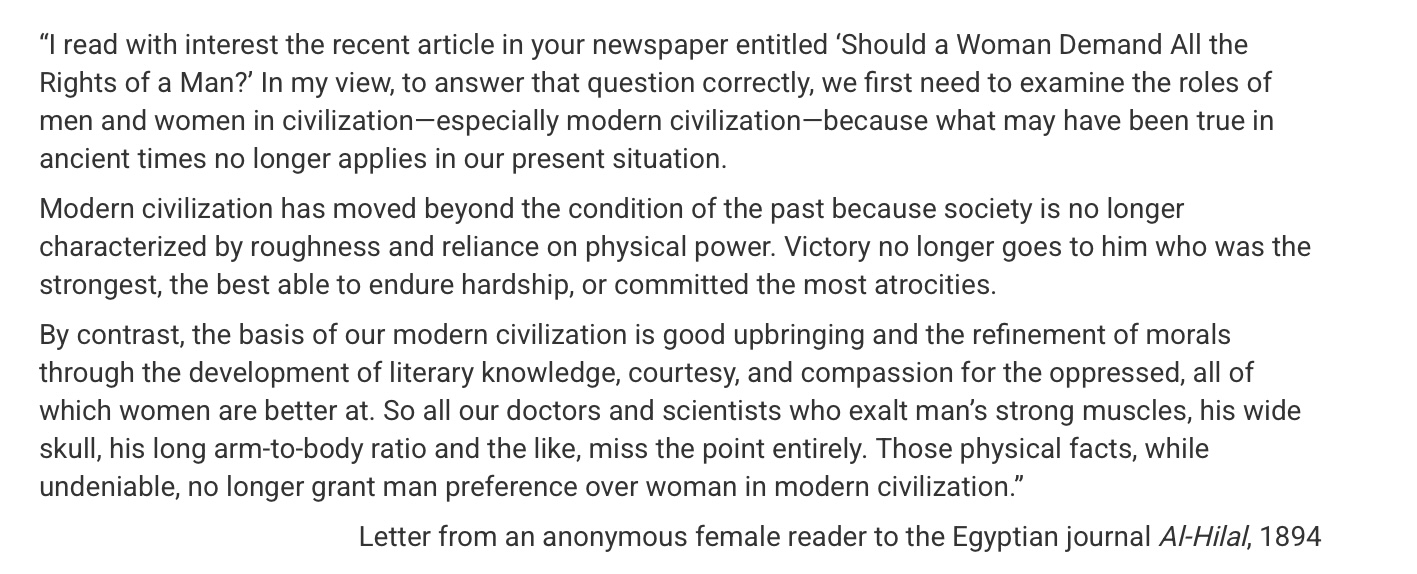
Which of the following groups in late-nineteenth-century Egypt would have been most likely to support the author’s view in the third paragraph about the status of women in “modern civilization” ?
The urban middle class
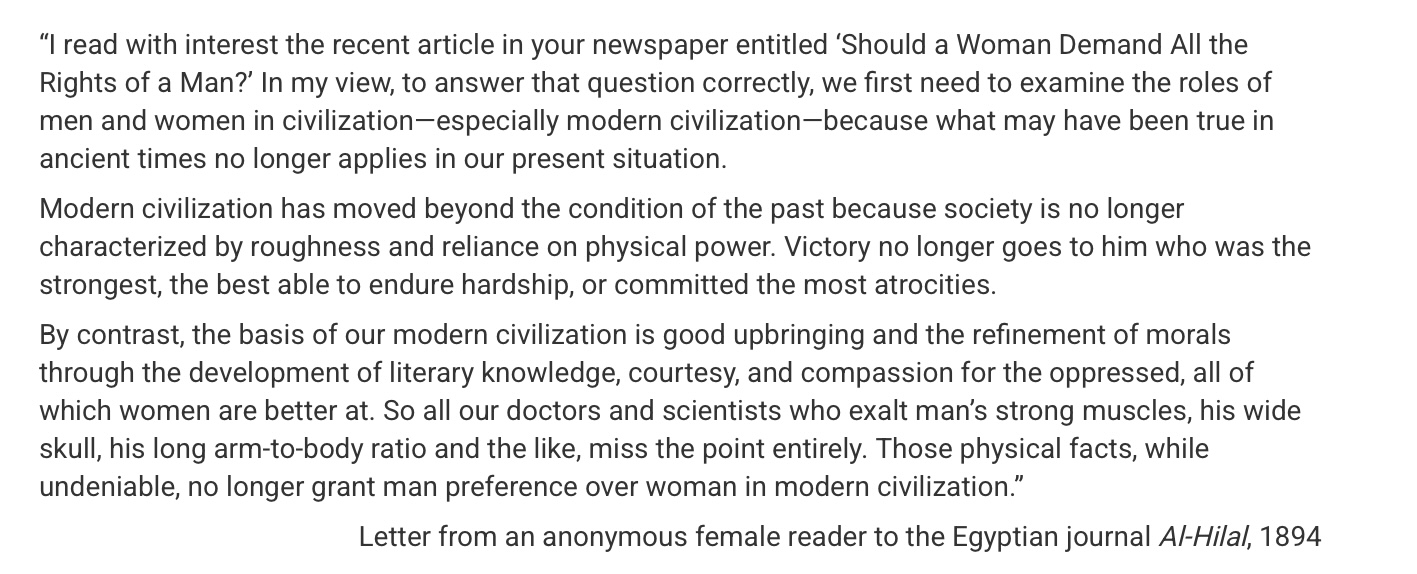
The letter’s reference in the third paragraph to the claims of “our doctors and scientists” is best understood in the context of which of the following late nineteenth-century processes
Physical differences between genders and racial groups were used to justify the denial of rights to women and non-Europeans.
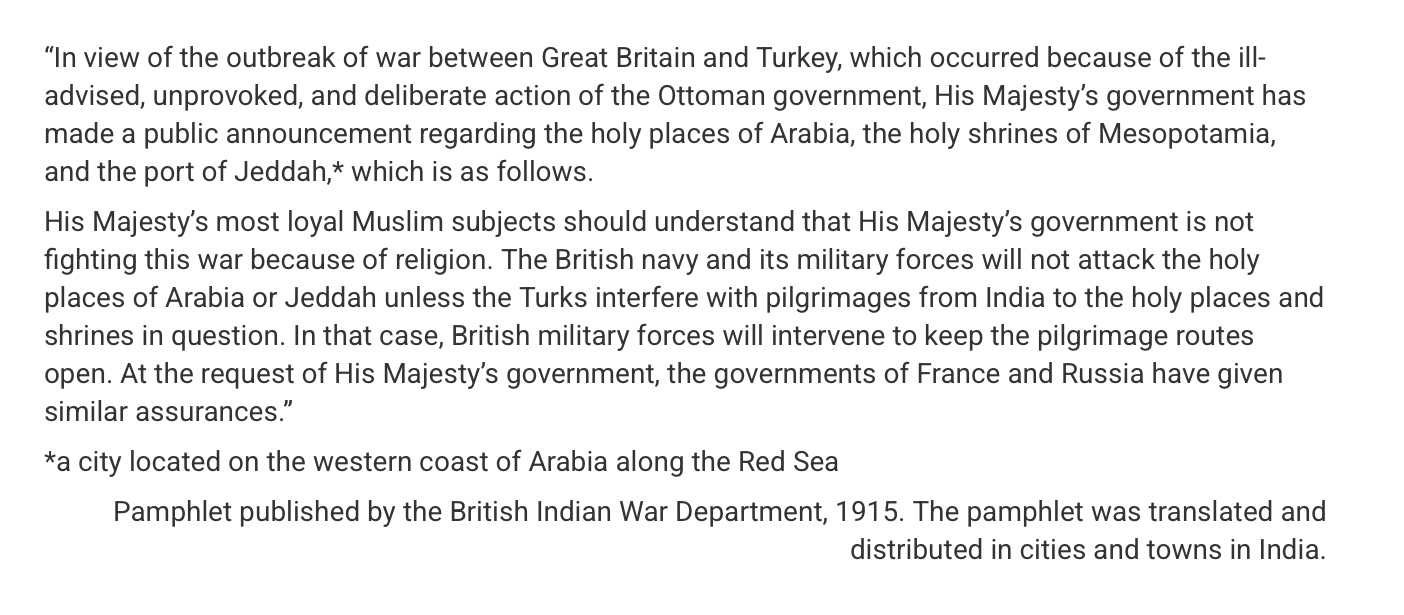
Which of the following best explains why the British government felt the need to distribute the pamphlet?
British authorities were concerned that going to war against a Muslim country could fuel anti-imperialist protests among India’s large Muslim population.
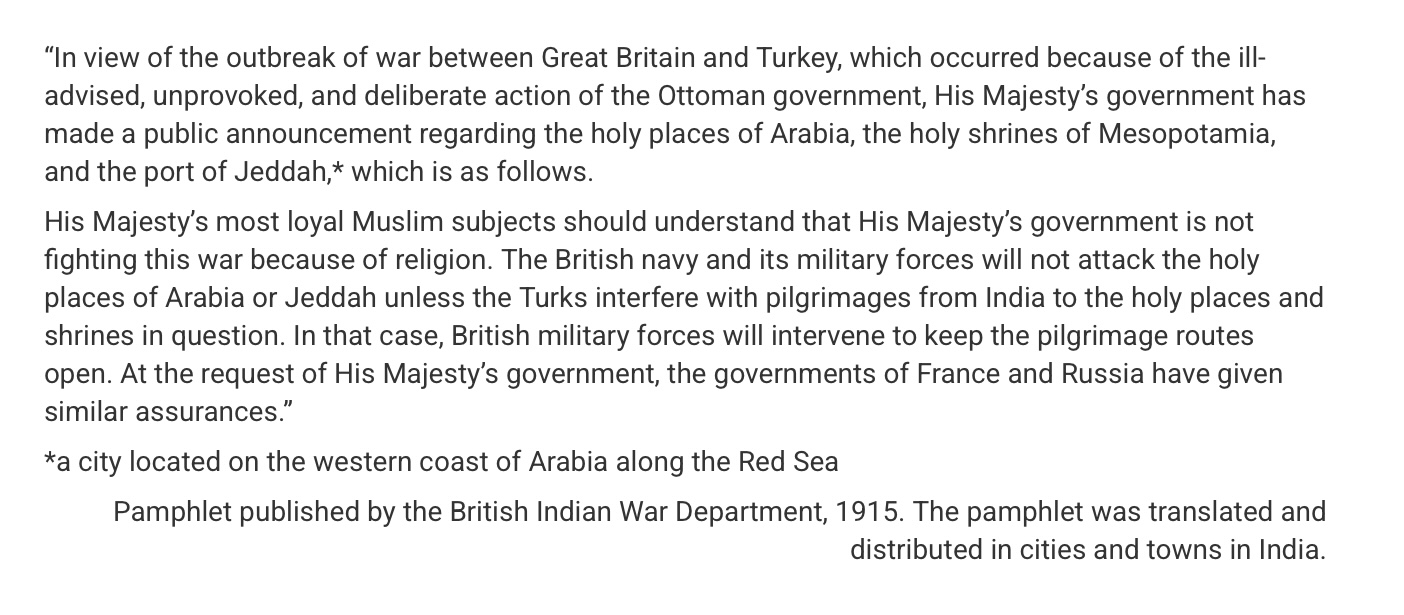
The Ottoman Empire likely entered into the conflict referred to in the passage because
it had lost significant territory to other European states in the nineteenth century.
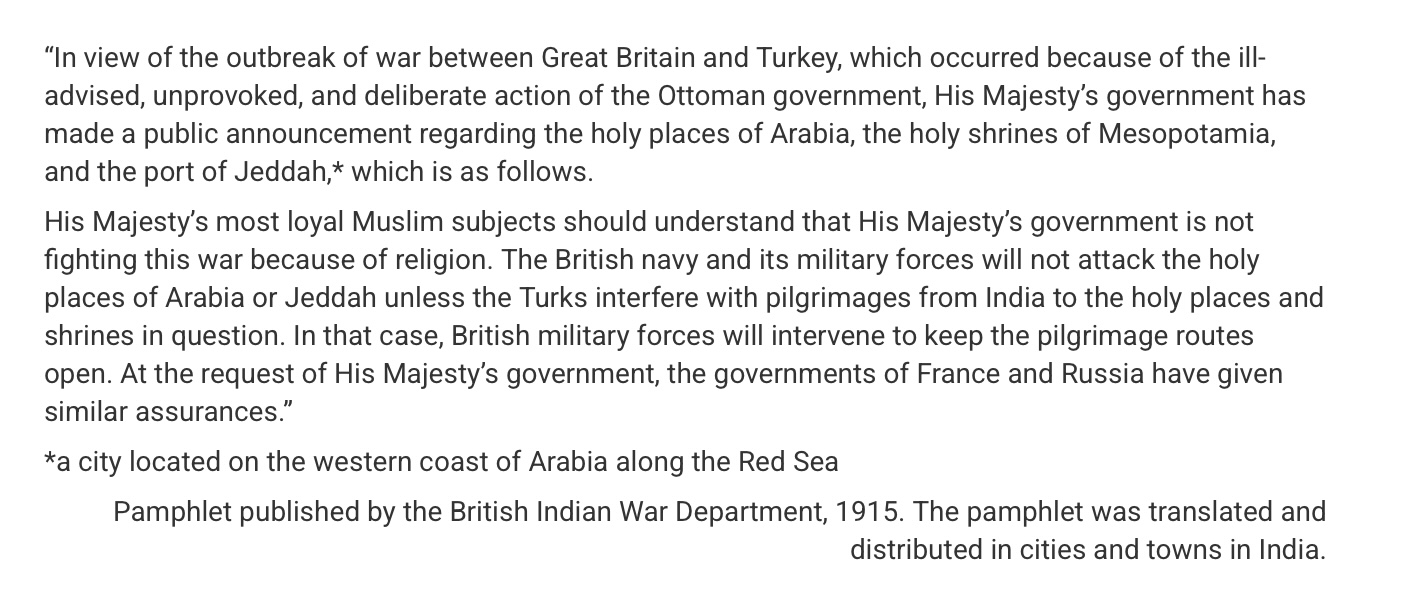
Which of the following was the most direct outcome of the conflict between Great Britain and the Ottoman Empire referred to in the passage?
The Ottoman Empire collapsed.
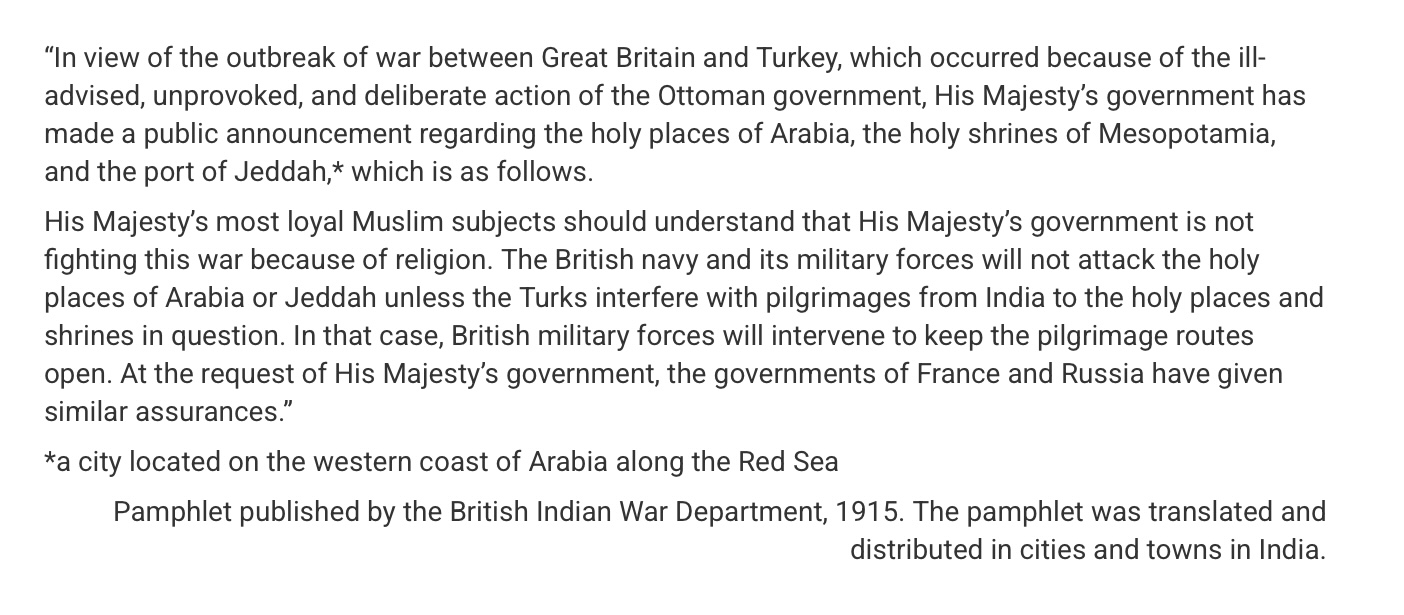
The treaties that settled the conflict referred to in the passage most directly changed the geopolitical structure of the Middle East in which of the following ways?
Allied powers received territorial mandates from the League of Nations.
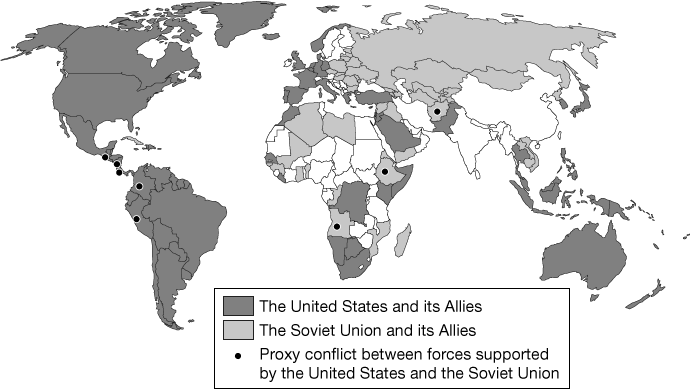
The global balance of power, alluded to on the map, best reflects which of the following changes in the mid-twentieth century?
The military and economic decline of Western European colonial empires following the Second World War
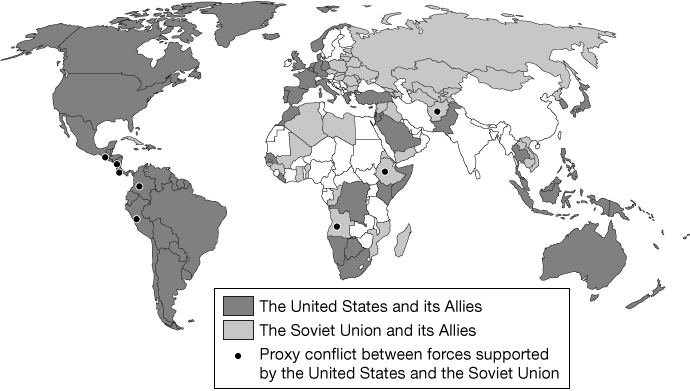
Which of the following likely explains the political positions of most of the nonaligned Asian and African states shown on the map?
As former colonial territories, they were wary of being dominated by another foreign power.
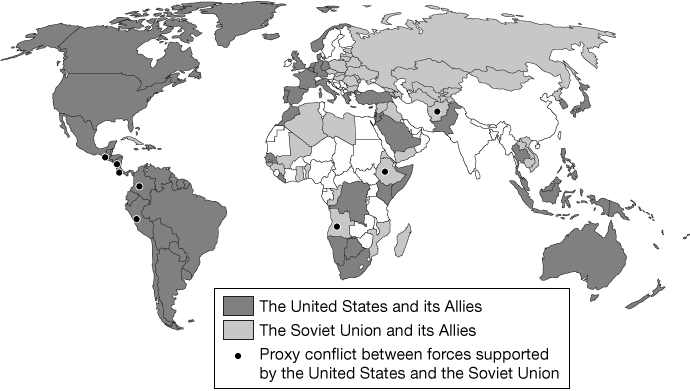
Which of the following best explains why the United States and the Soviet Union preferred to engage in the type of conflicts shown on the map?
To avoid direct military confrontations that could lead to nuclear war
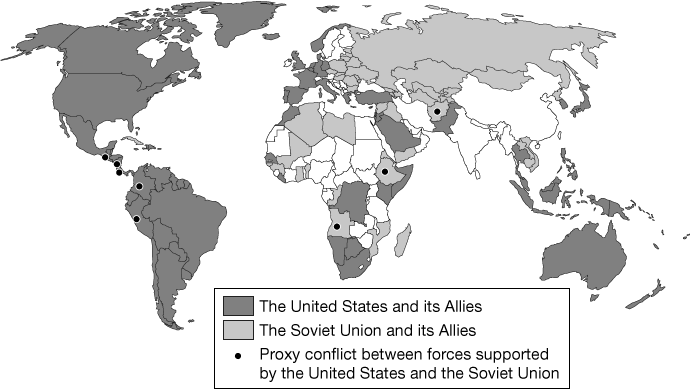
All of the following contributed to the end of the political order depicted on the map EXCEPT
armed rebellions in Eastern European states against Soviet rule
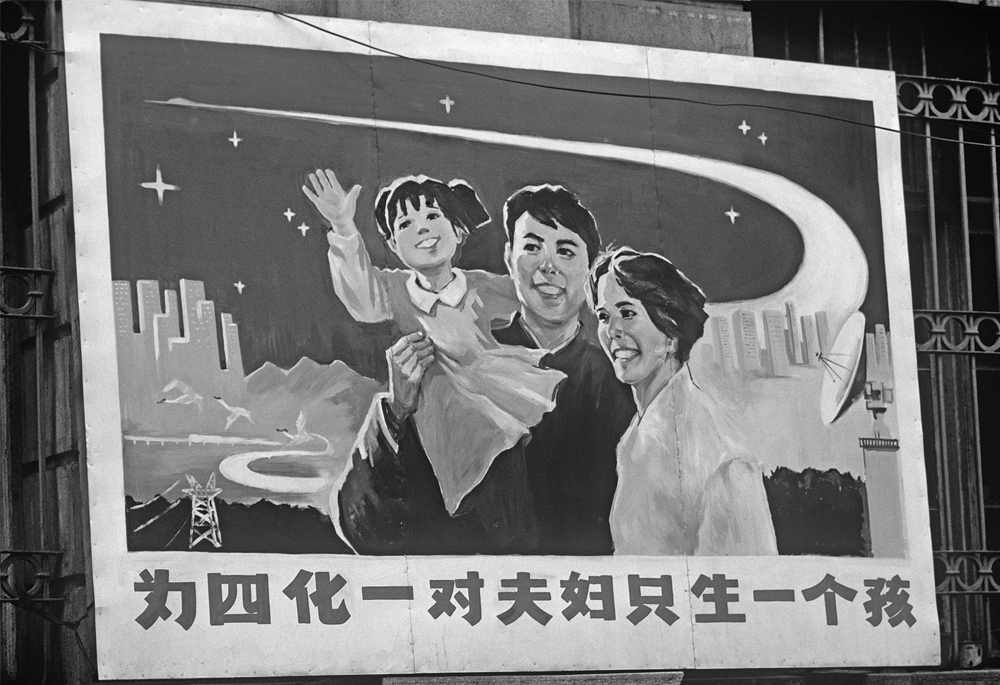
Which of the following most likely expresses the poster’s main message regarding the one-child policy?
The policy would guarantee China’s future prosperity and progress.

Which of the following features of communist China in the late twentieth century most likely enabled its government to carry out the policy shown in the image?
Its totalitarian system
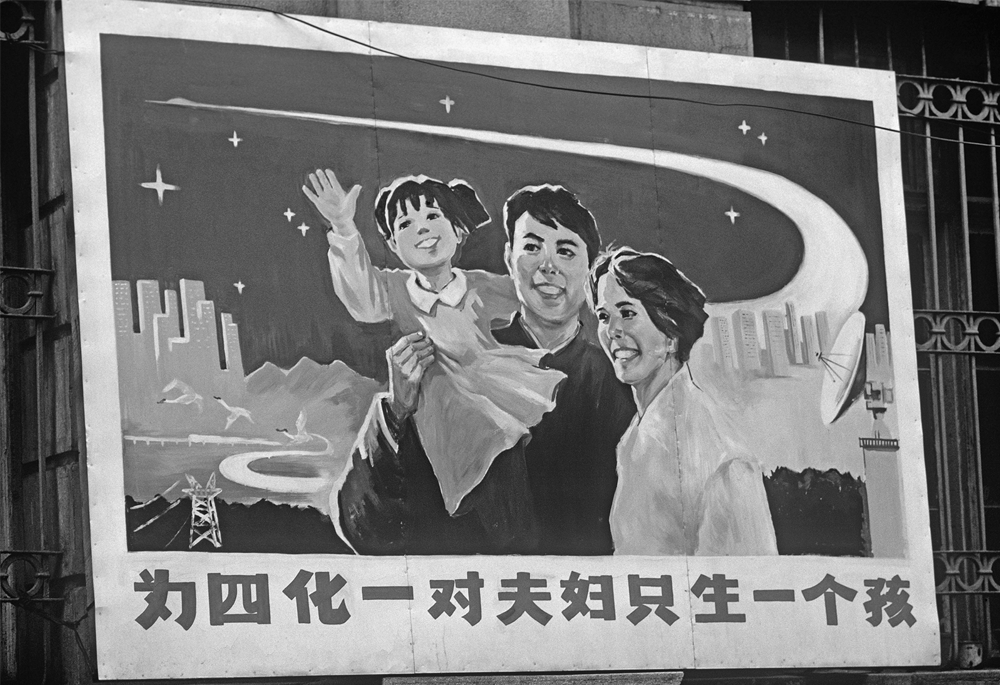
The poster could best be used to illustrate which of the following global trends in the post–Second World War period?
The tendency of governments to take a strong role in guiding their countries’ economic and social development
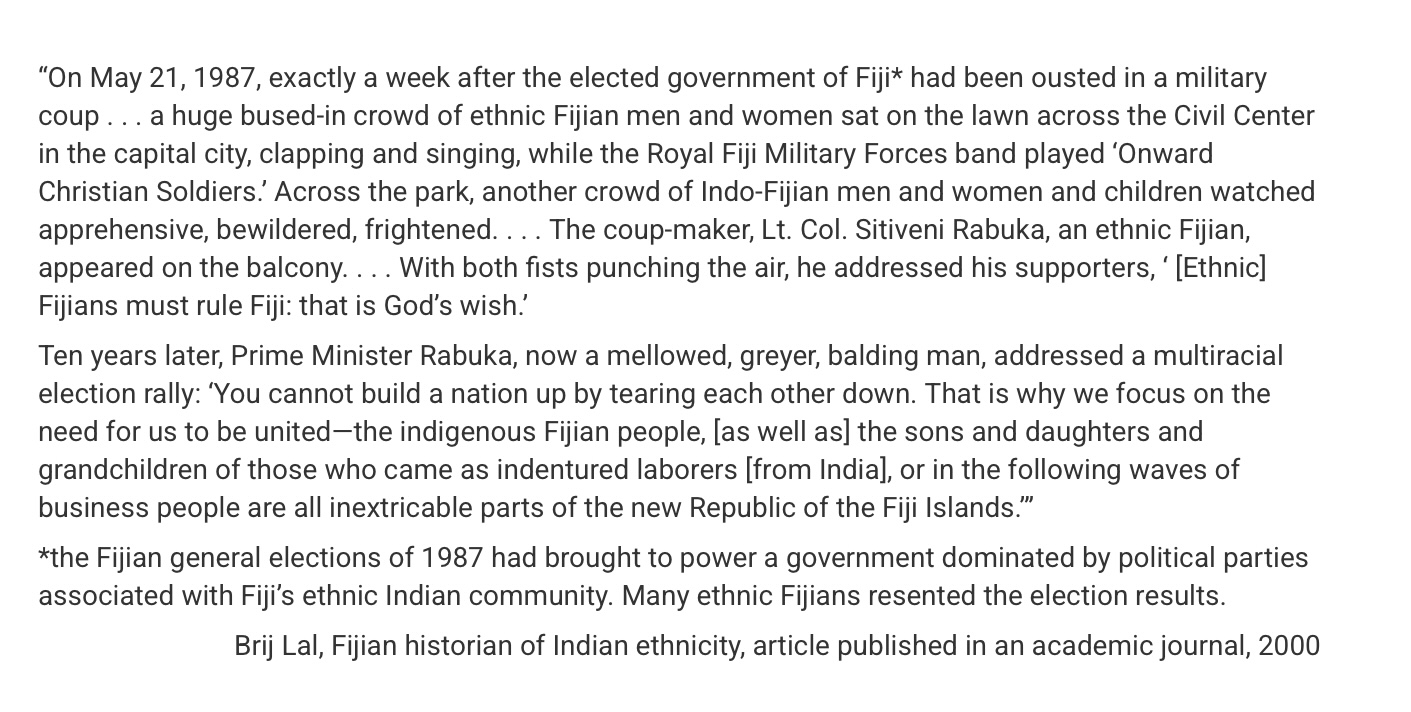
Which of the following nineteenth-century processes most directly contributed to the migration of Indian laborers to Fiji as described in the passage?
Colonial states in Asia and the Pacific relied on coerced labor to work on plantations
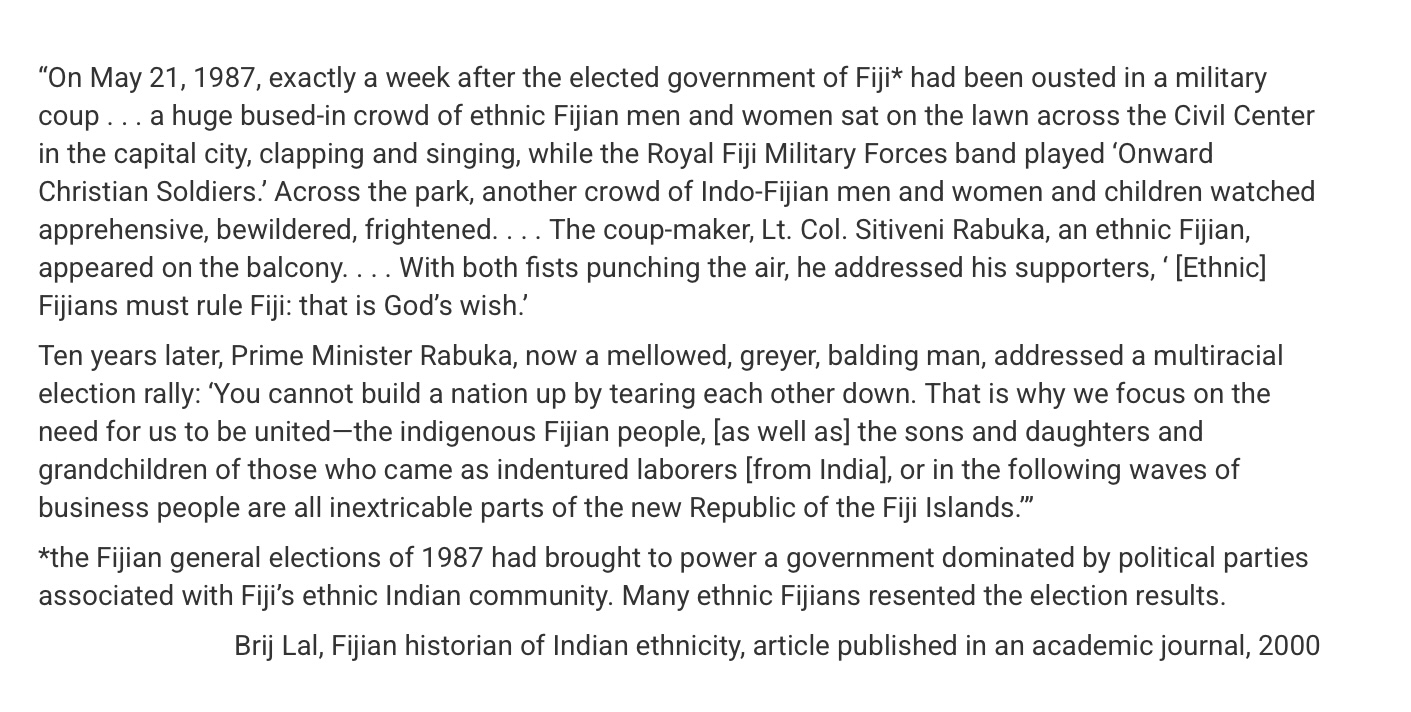
Which of the following processes most directly contributed to the tensions in Fiji described in the first paragraph?
Migrant groups often created relatively isolated ethnic enclaves, while receiving societies responded to them through ethnic prejudice.
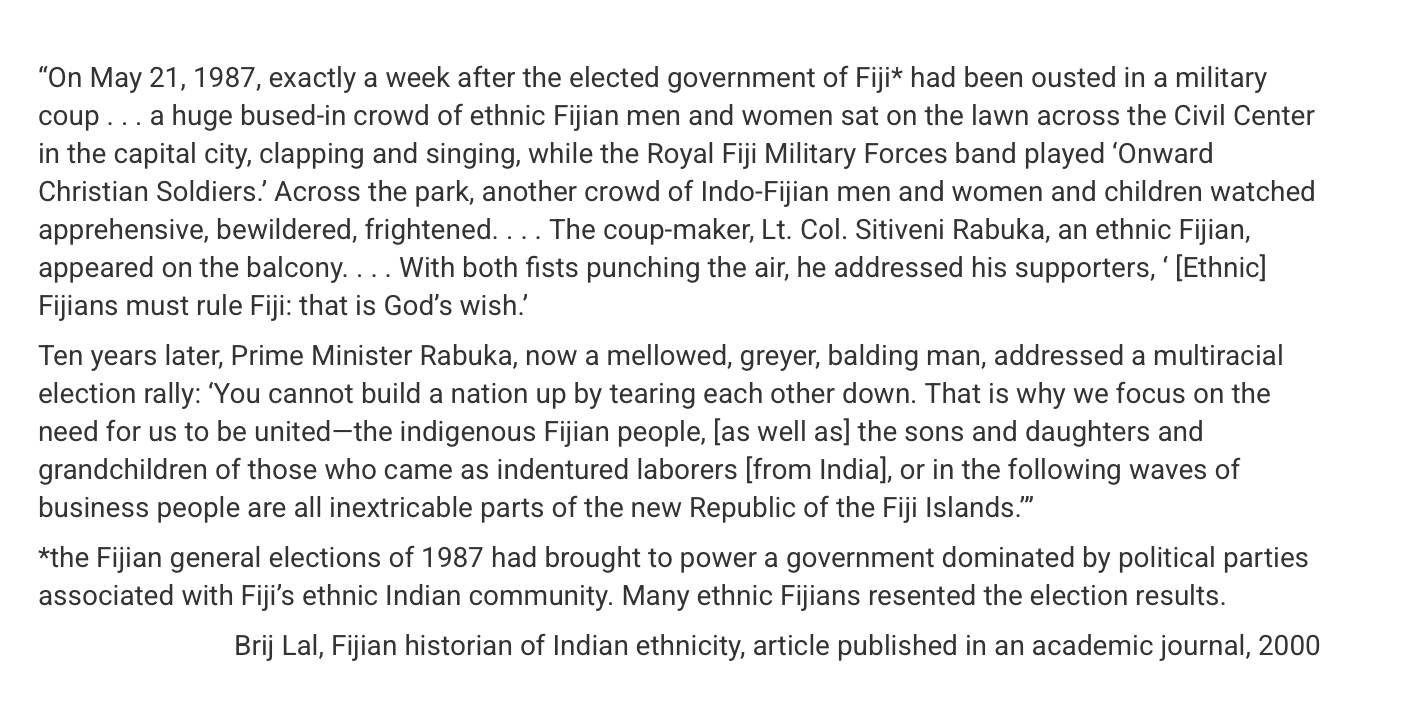
As outlined in the second paragraph, the changes in Rabuka’s political rhetoric between 1987 and 1997 were most likely a result of which of the following?
The spread of democratization and economic globalization in the modern world